
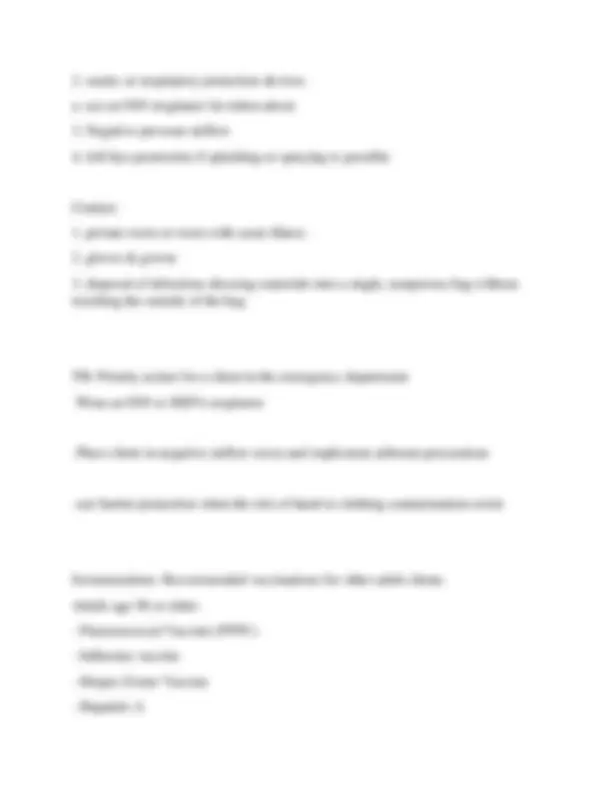
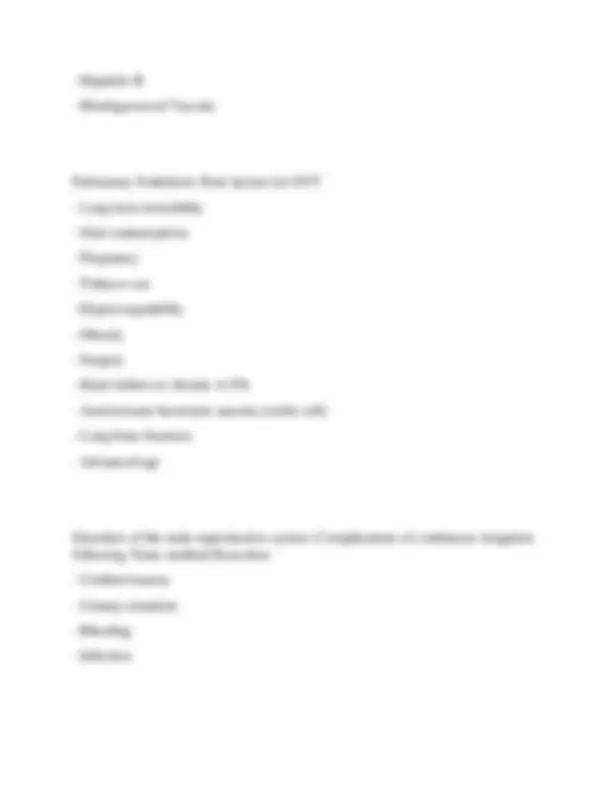
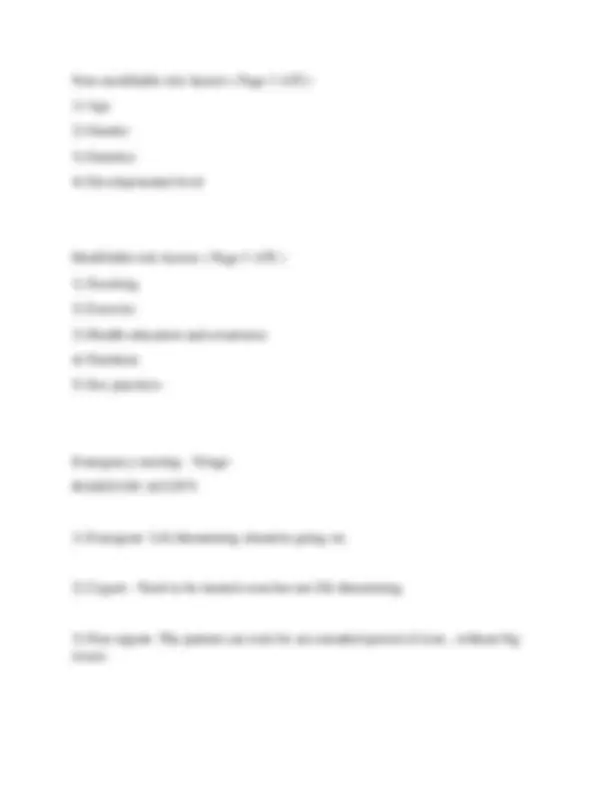
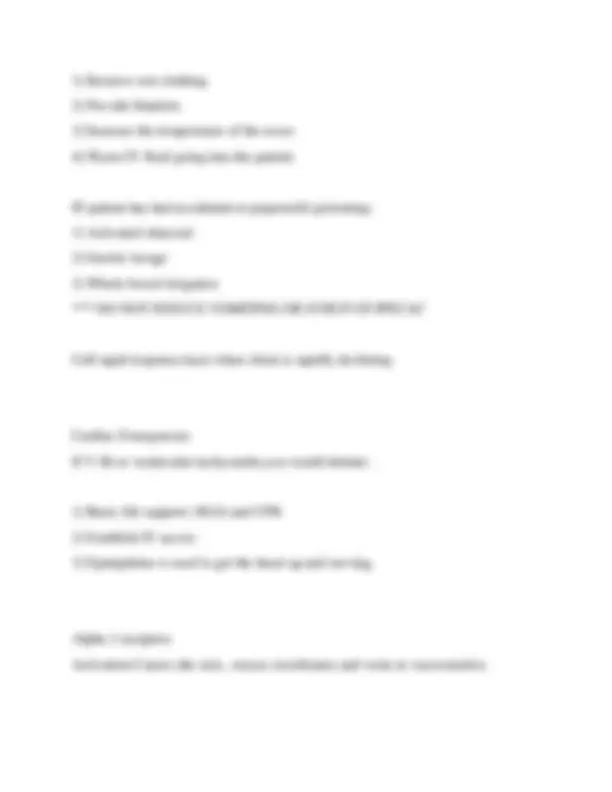
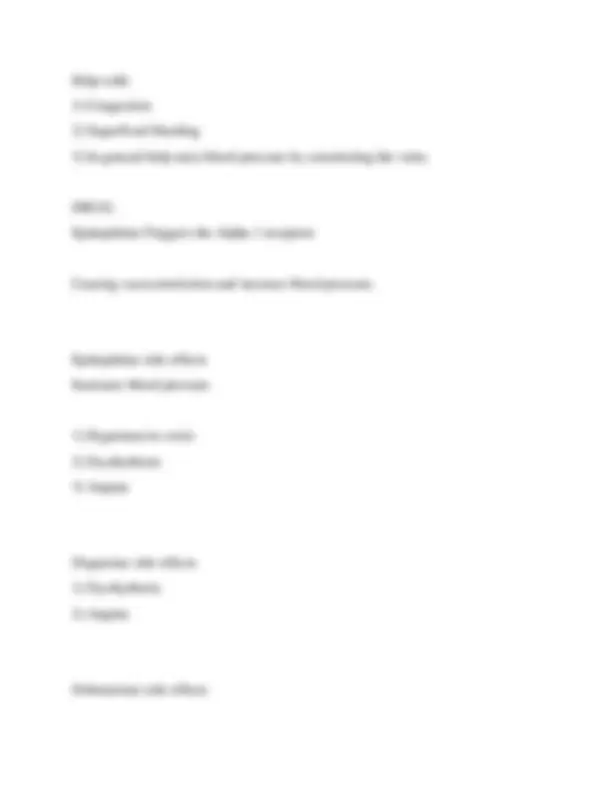
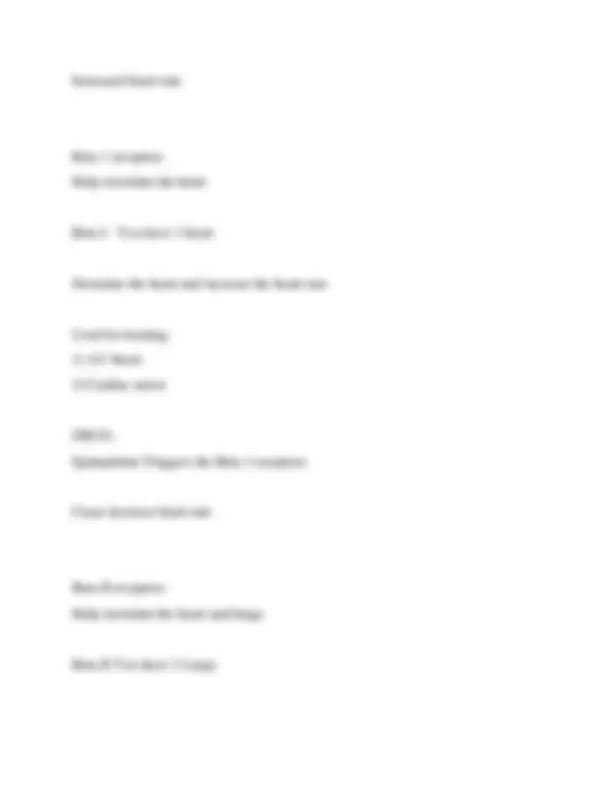
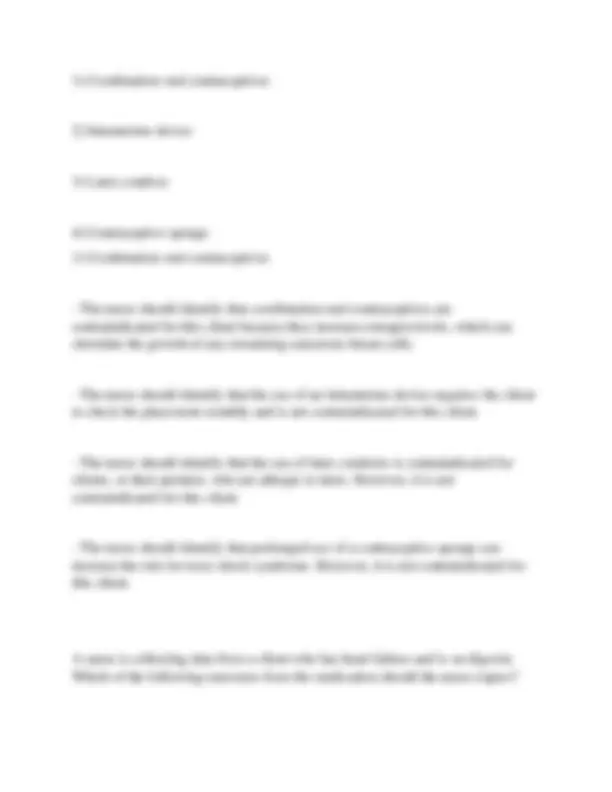
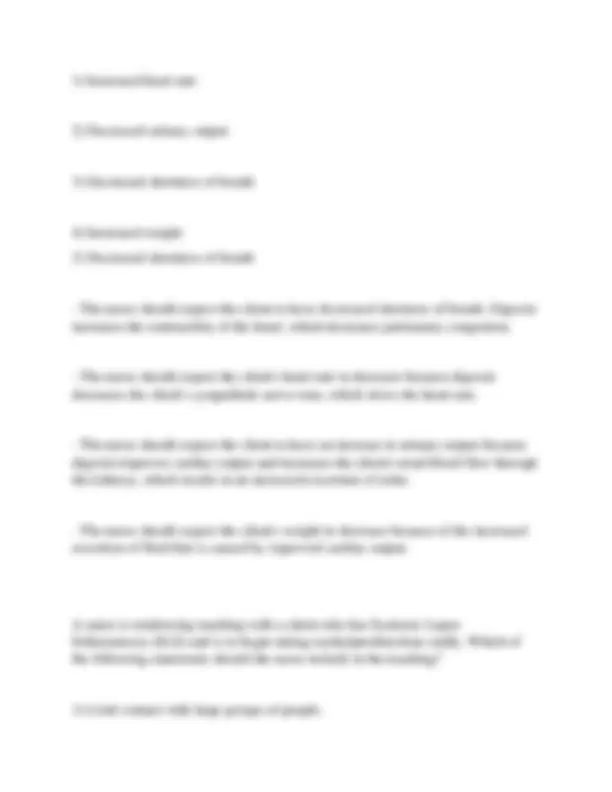
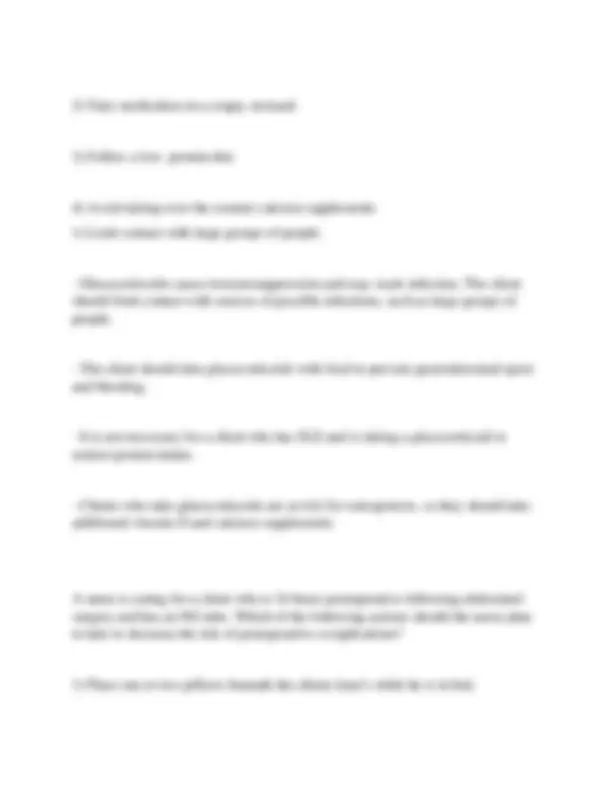
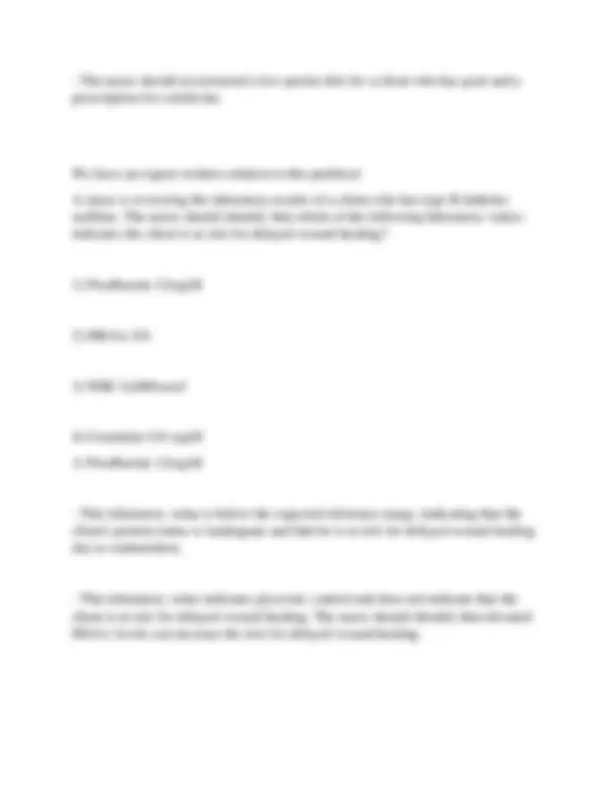
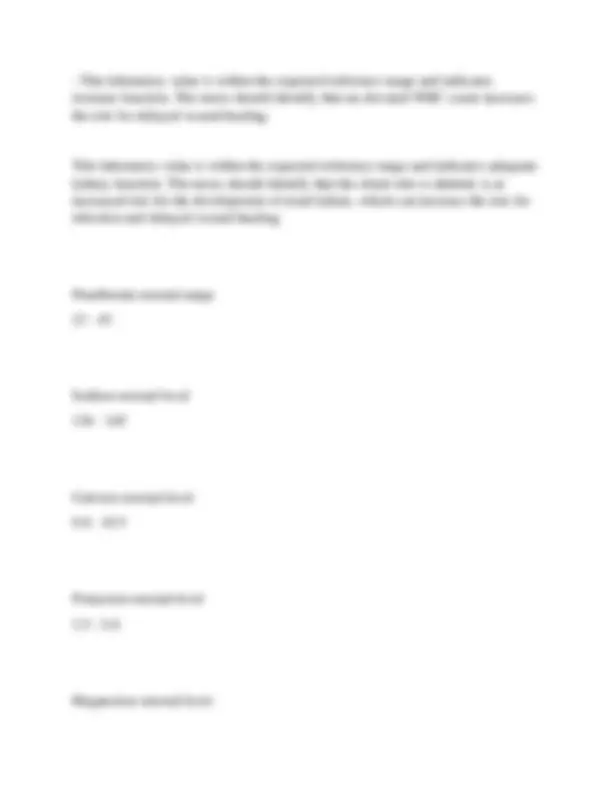
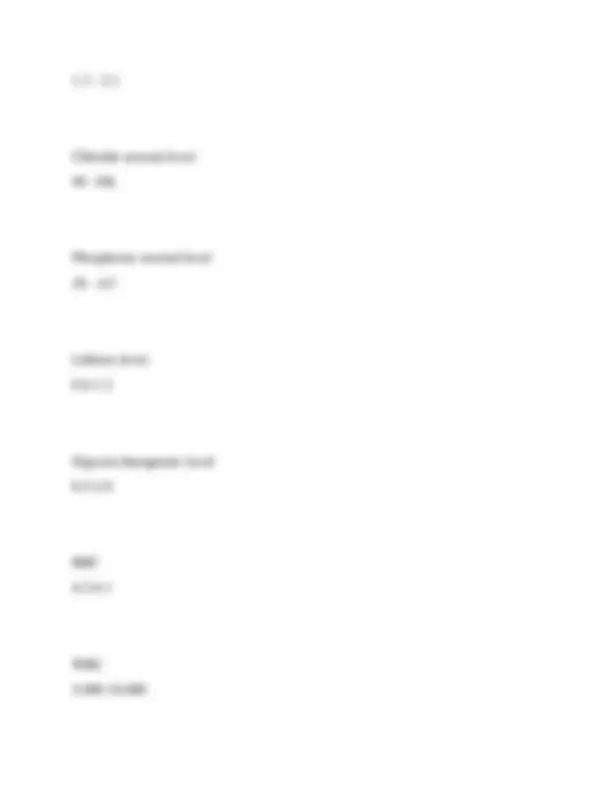
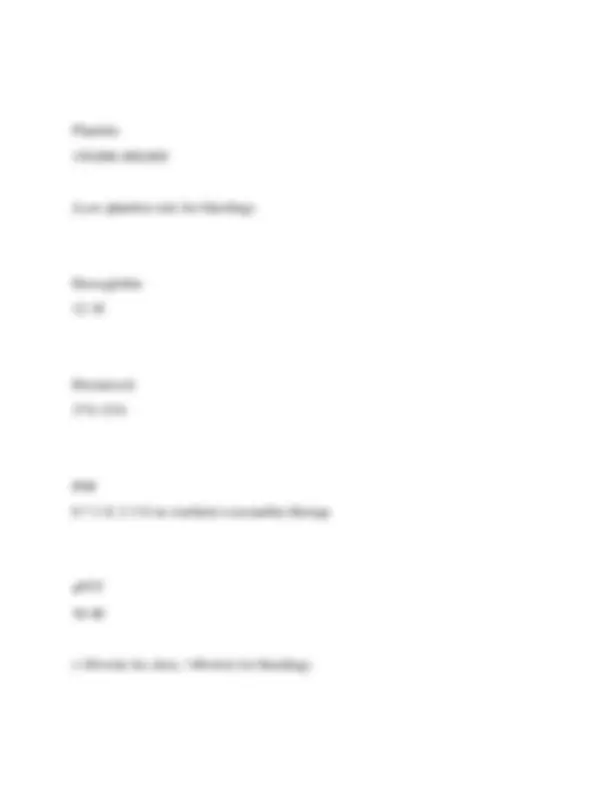
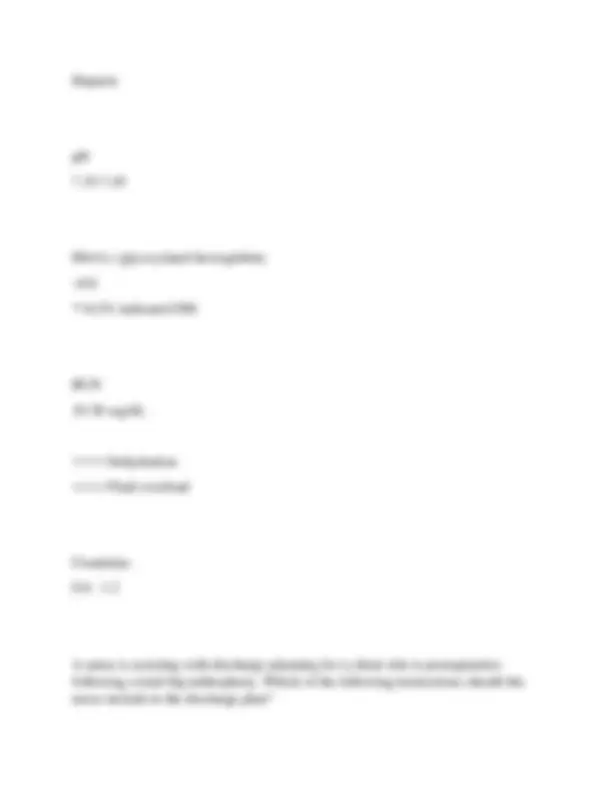
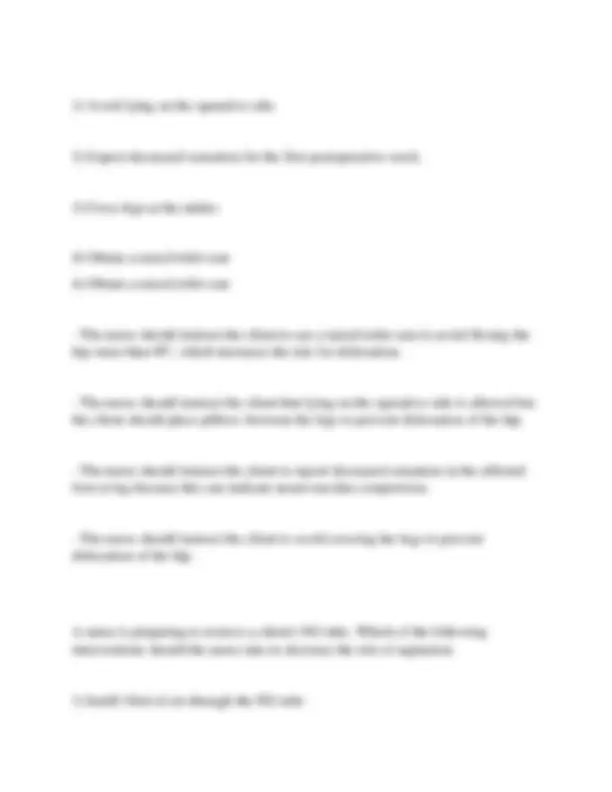
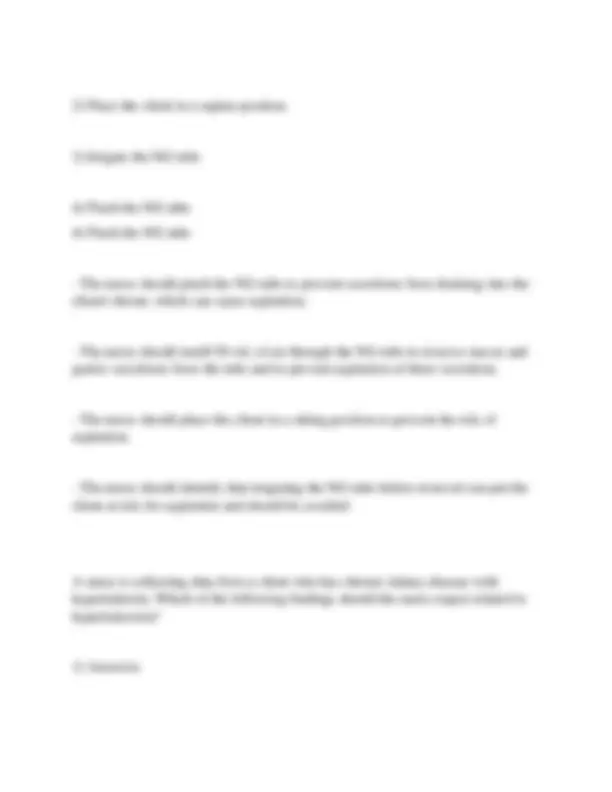
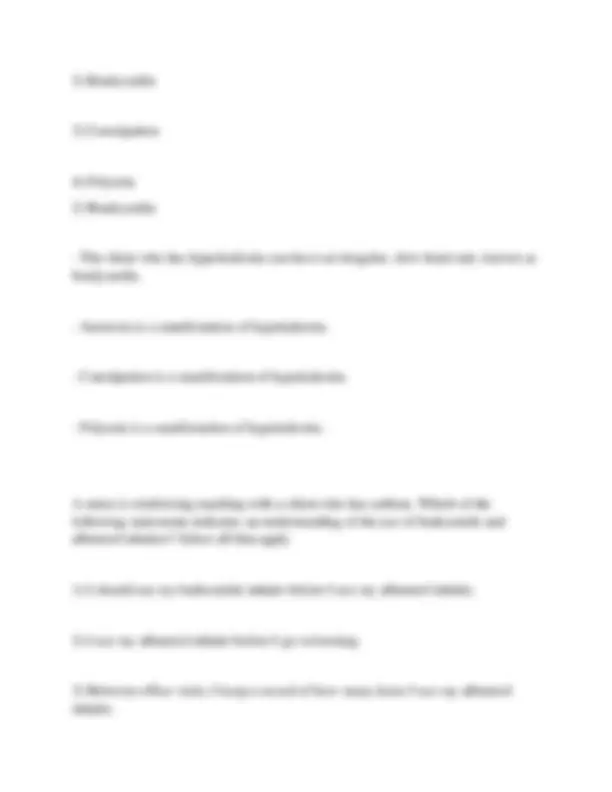
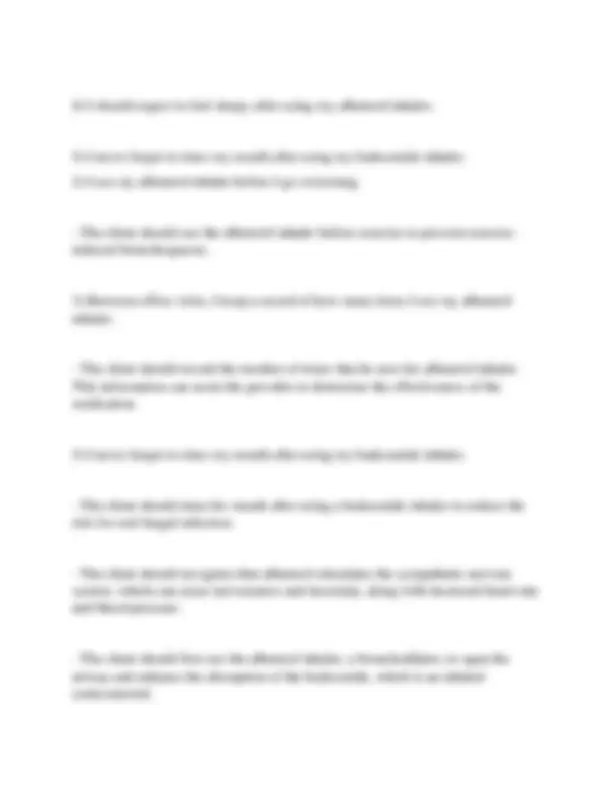
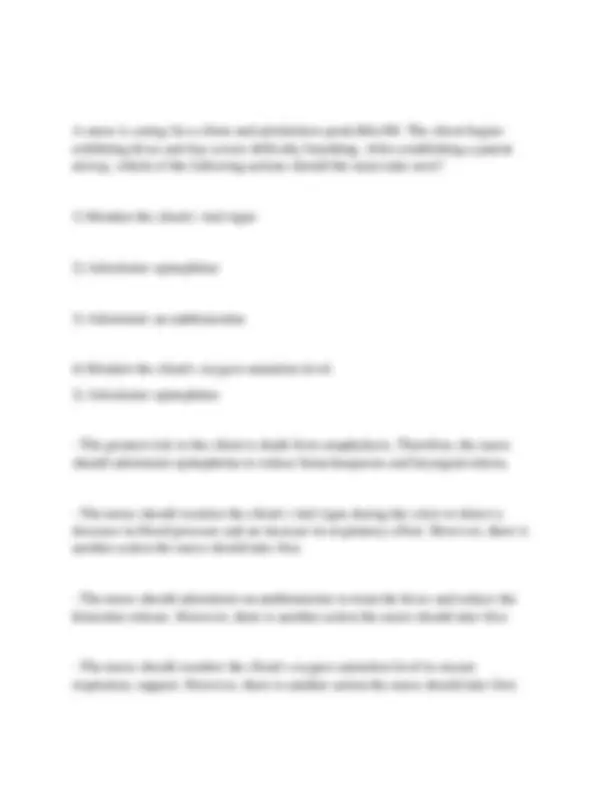
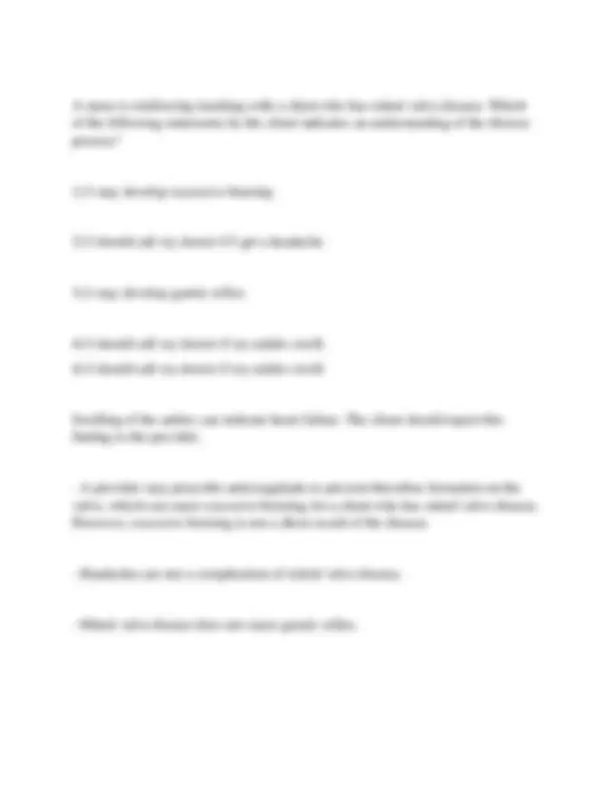
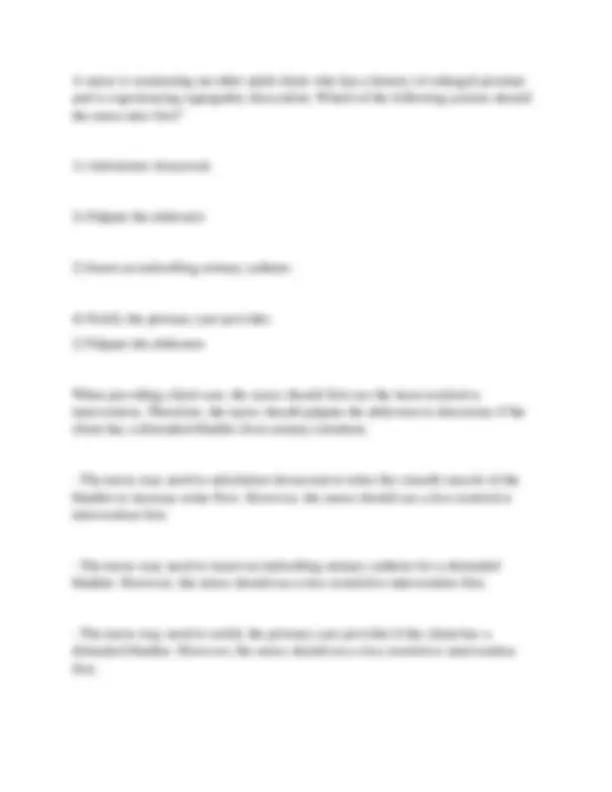
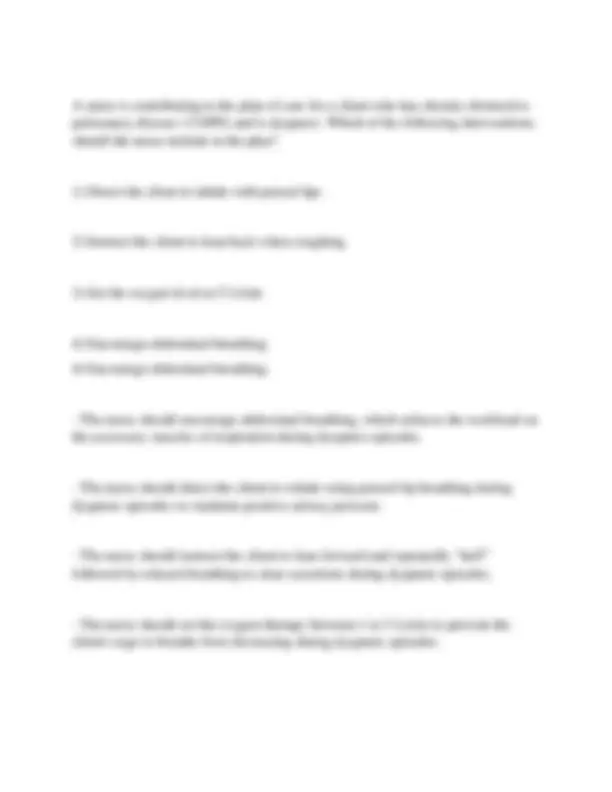
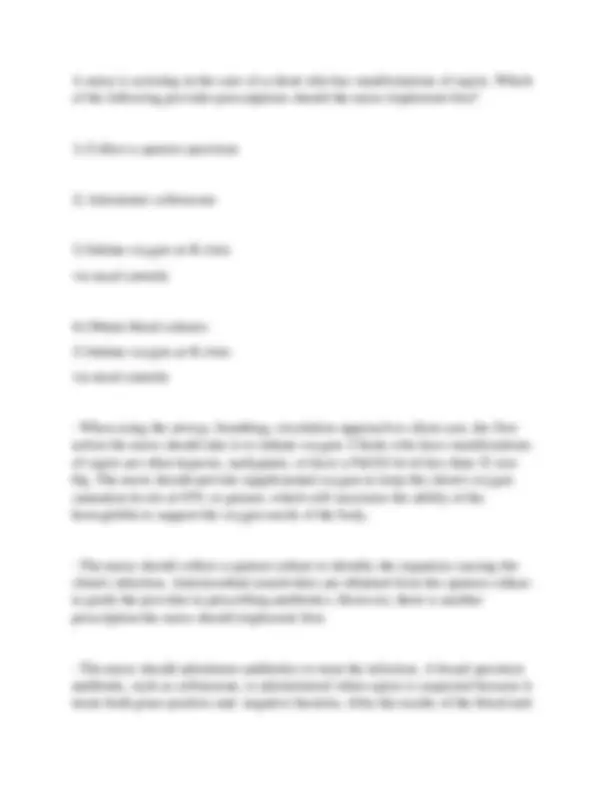
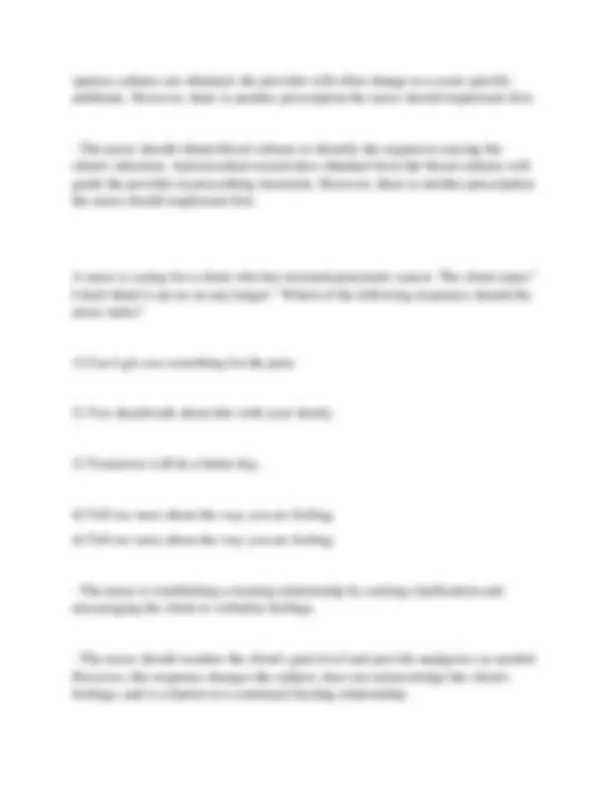
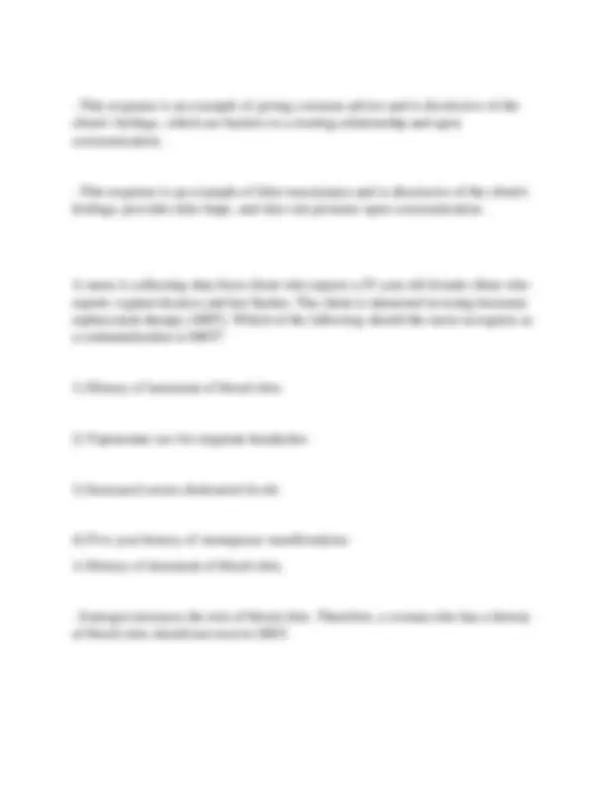
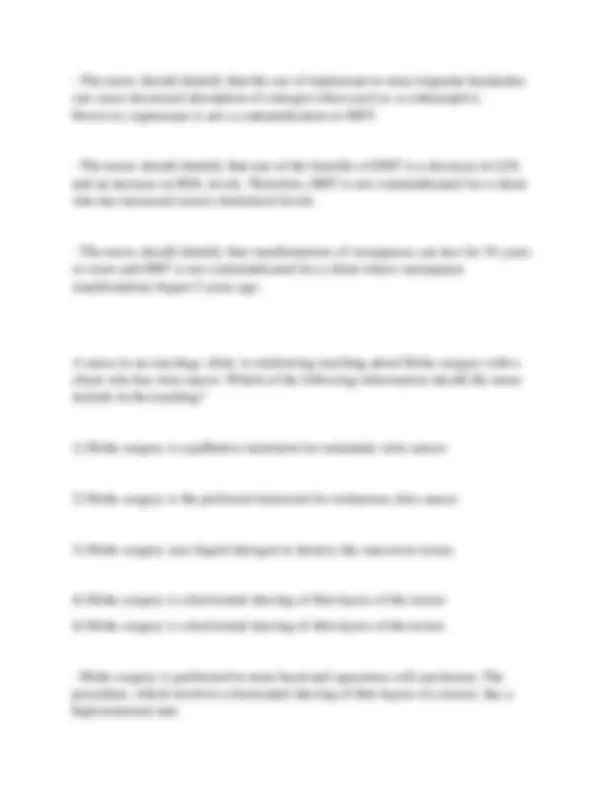
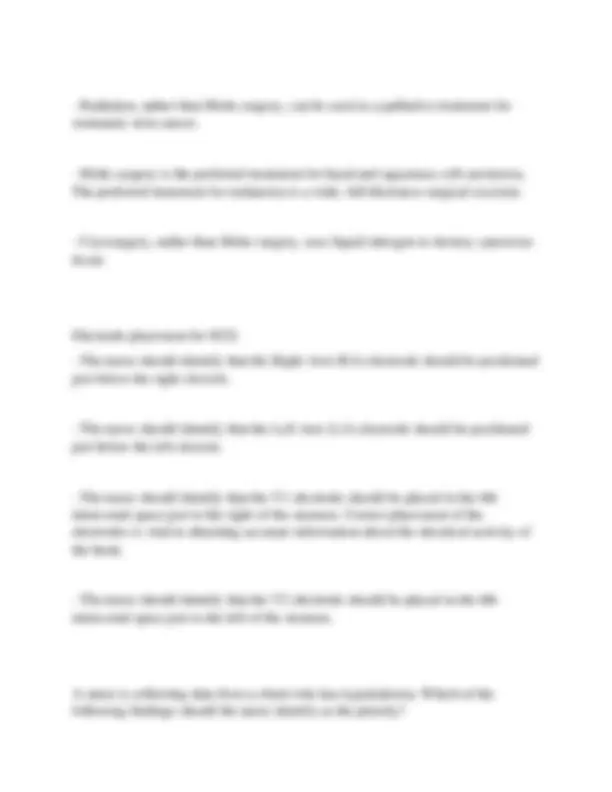

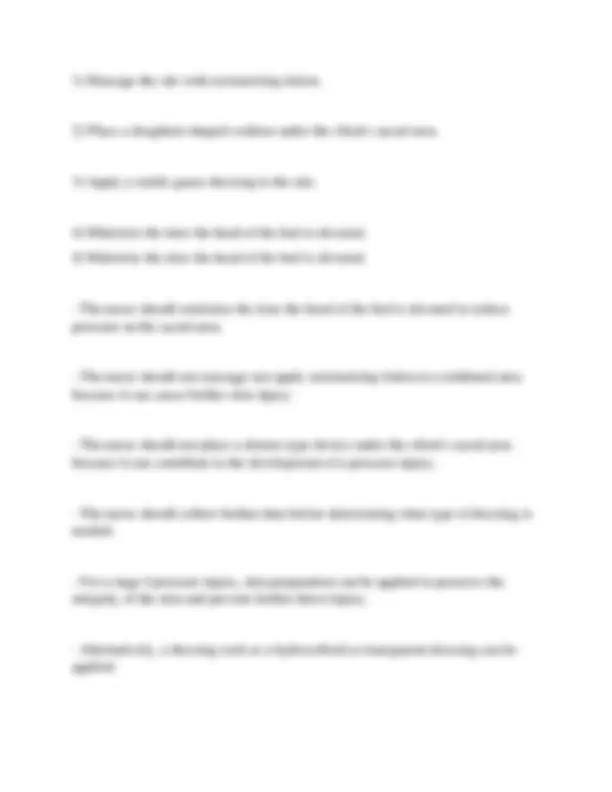
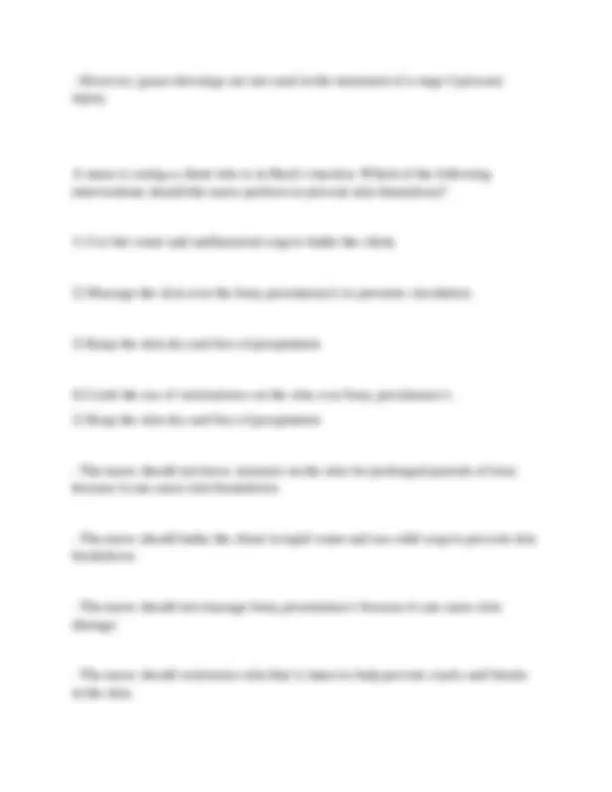
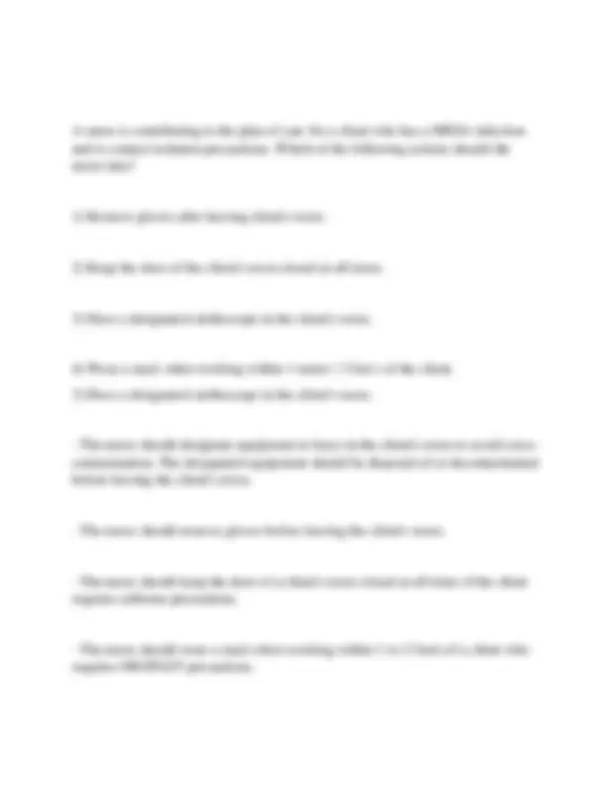
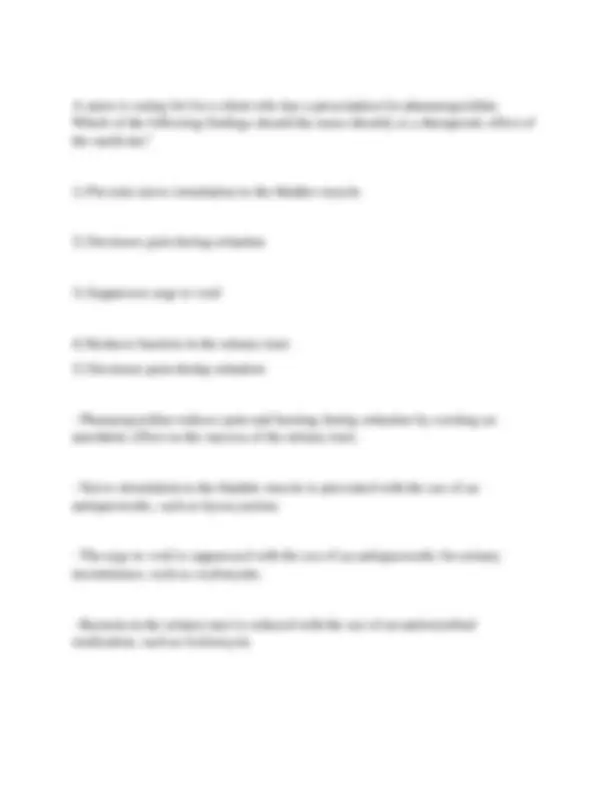
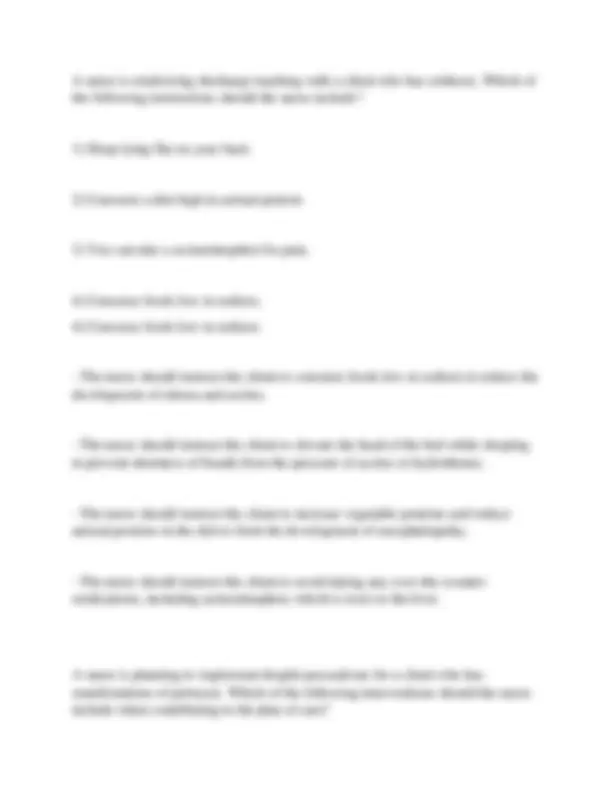
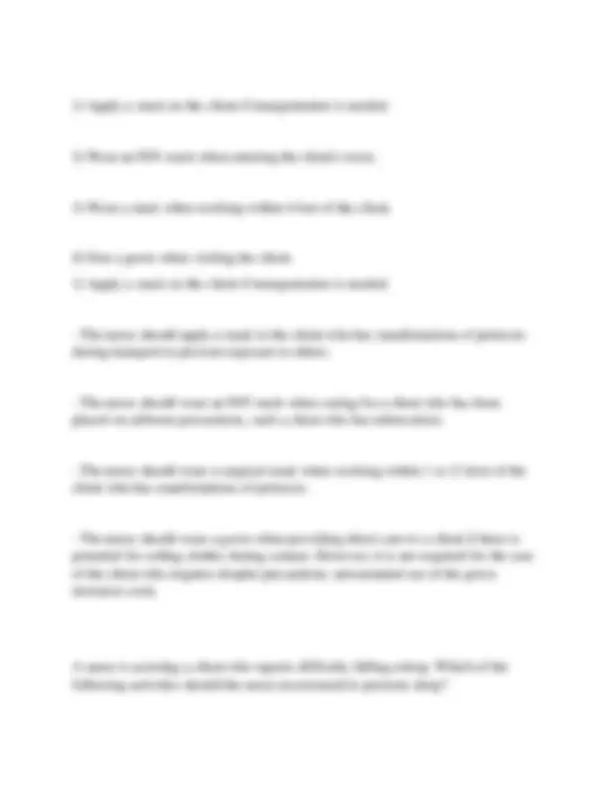
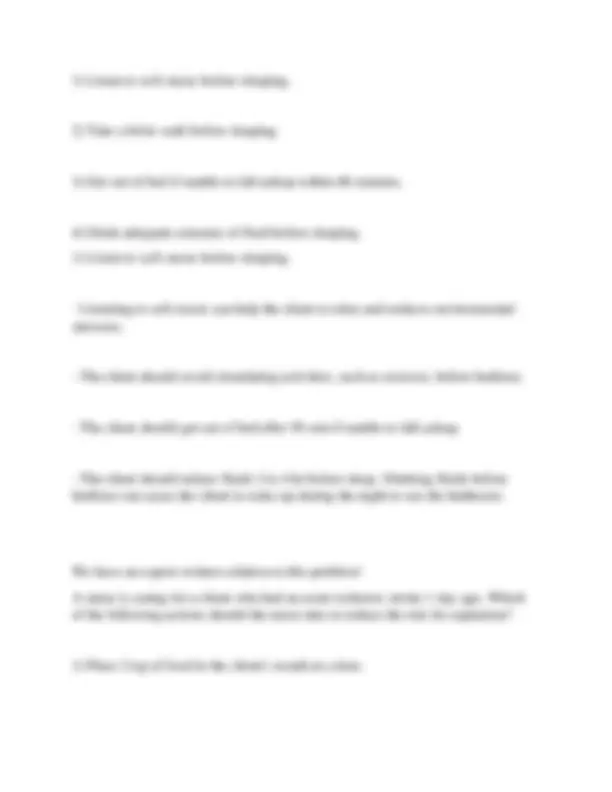
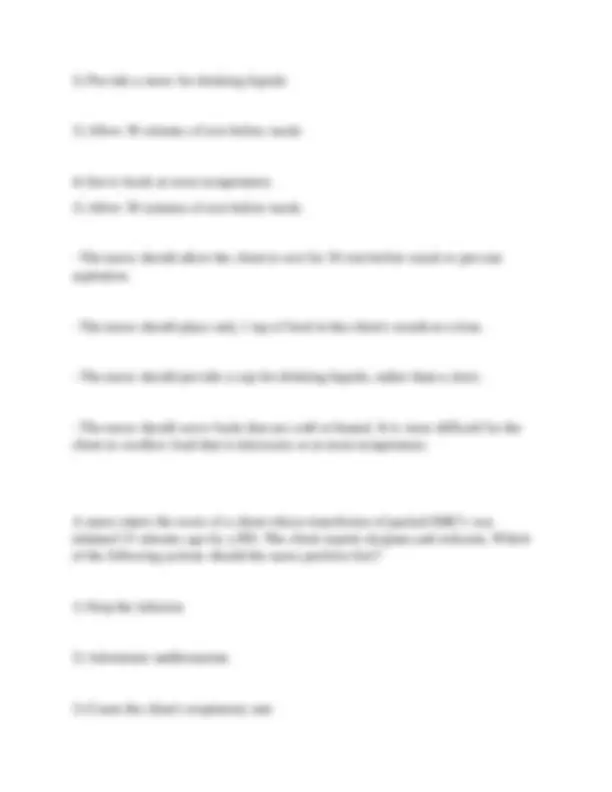
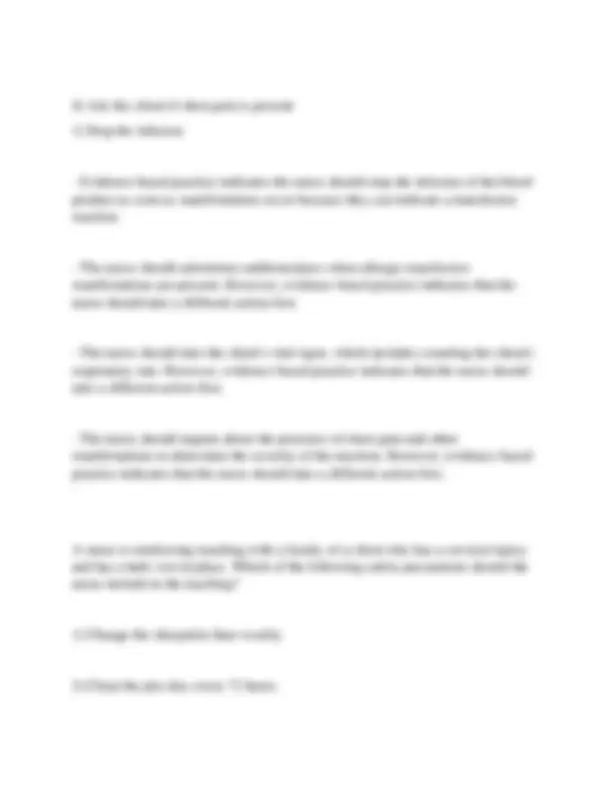
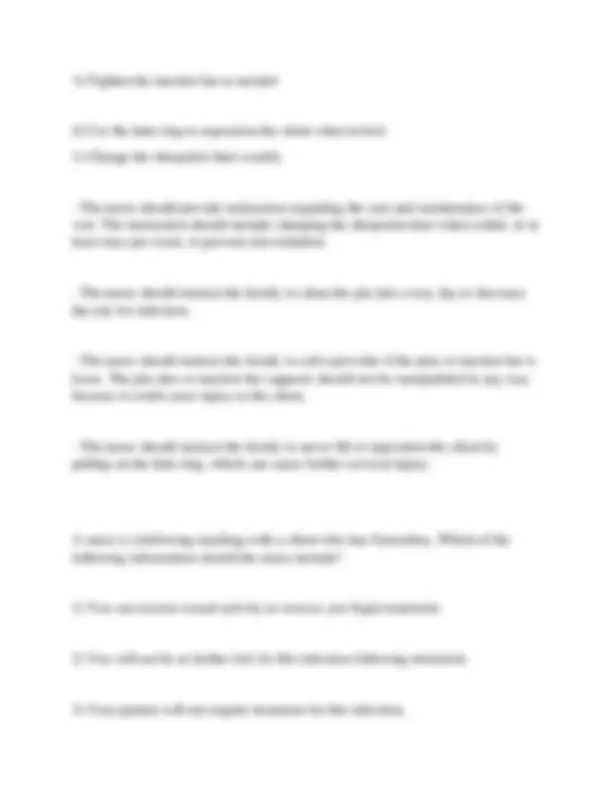
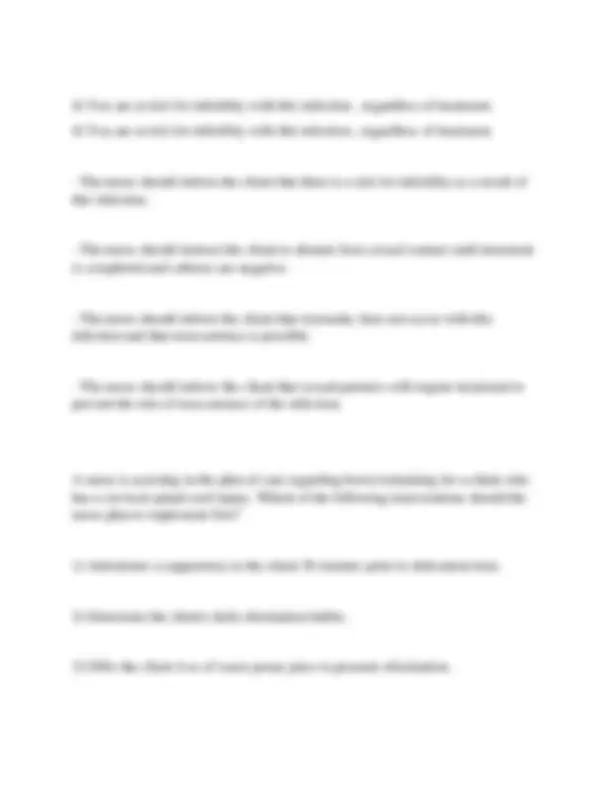
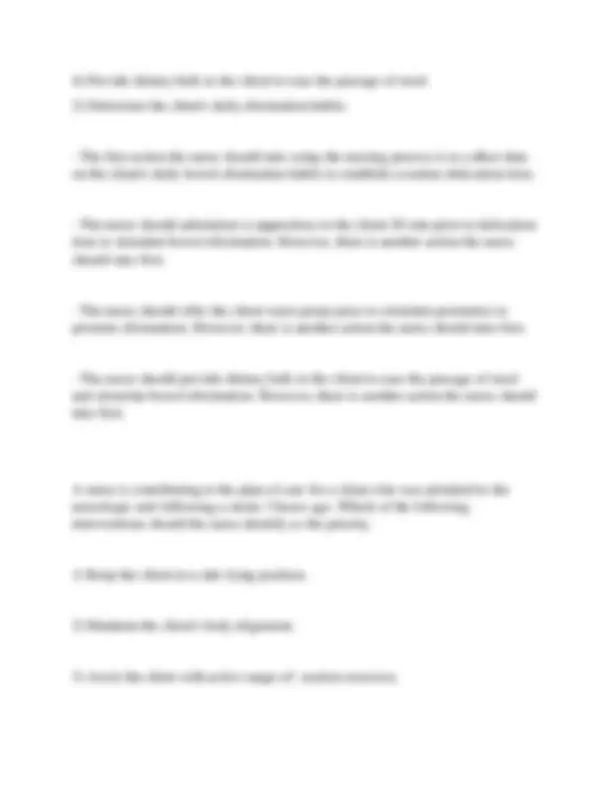
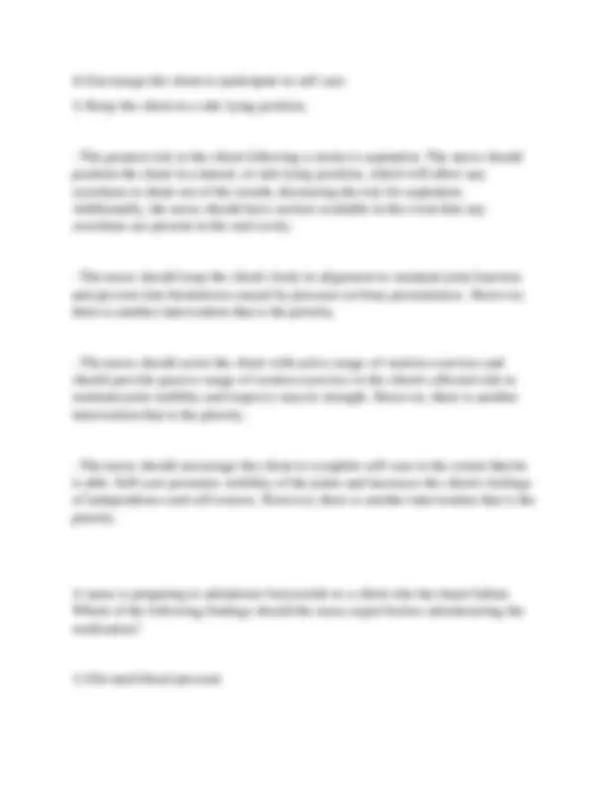
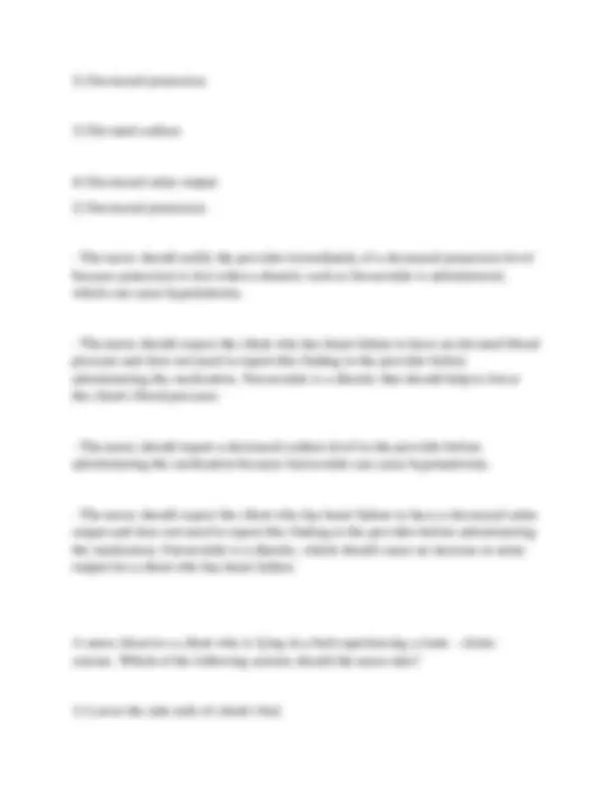
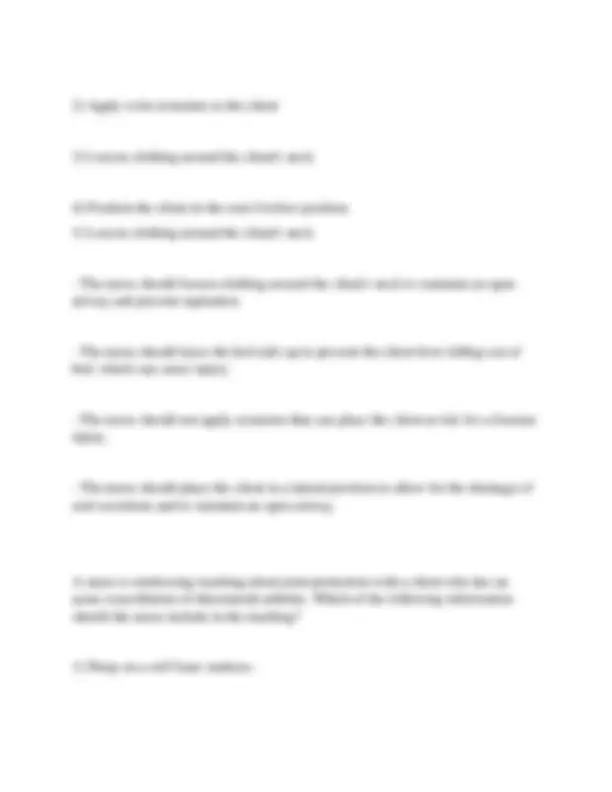
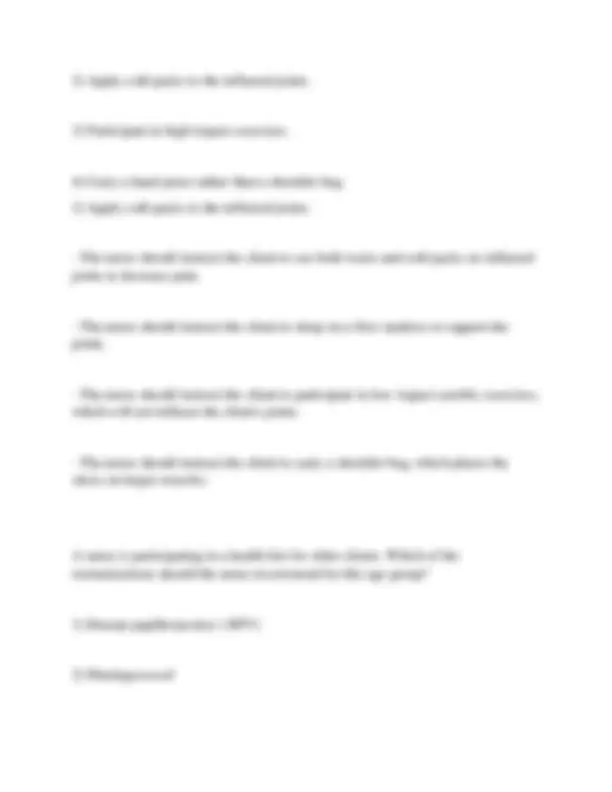
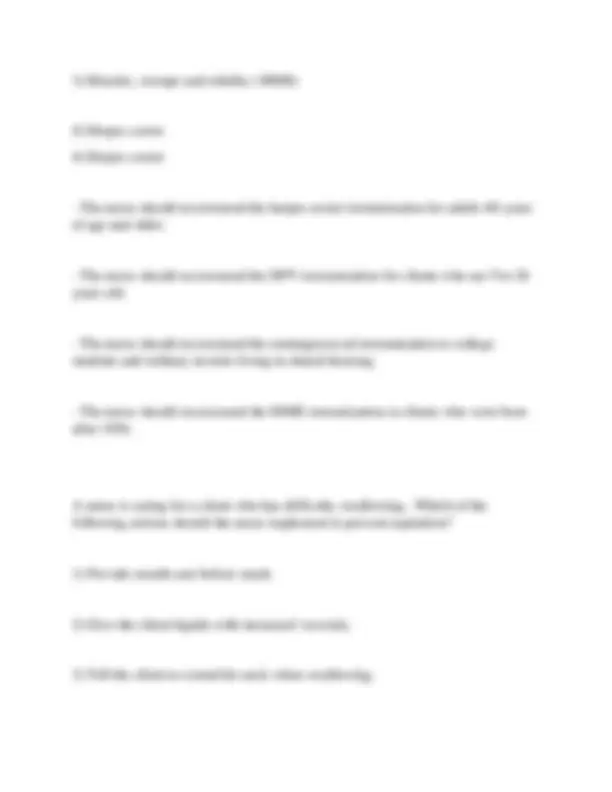
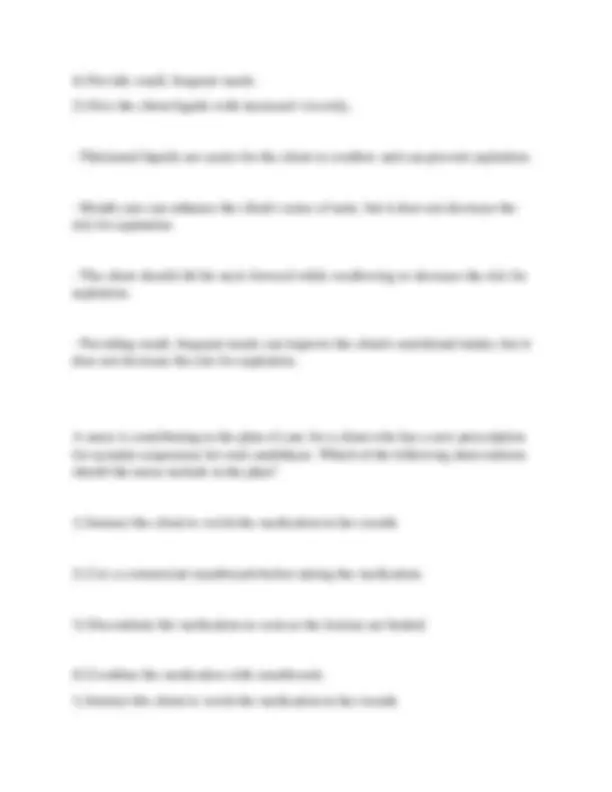
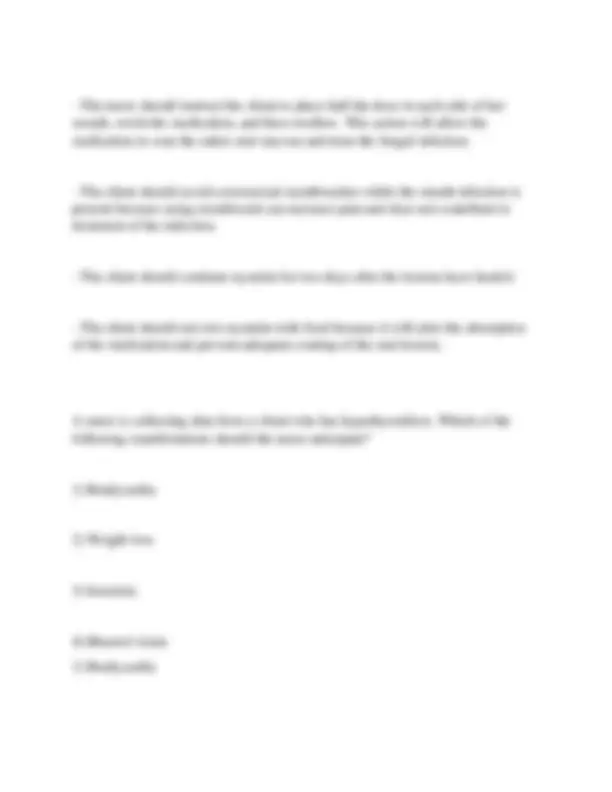

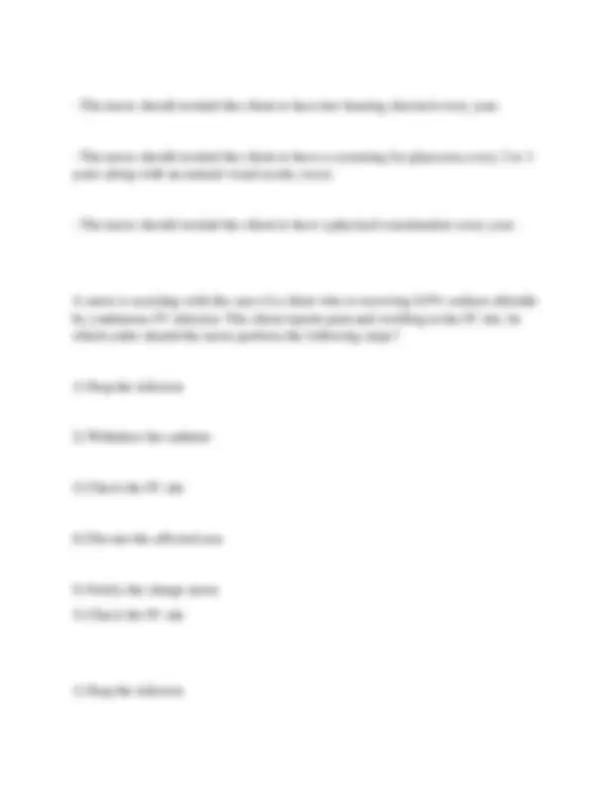
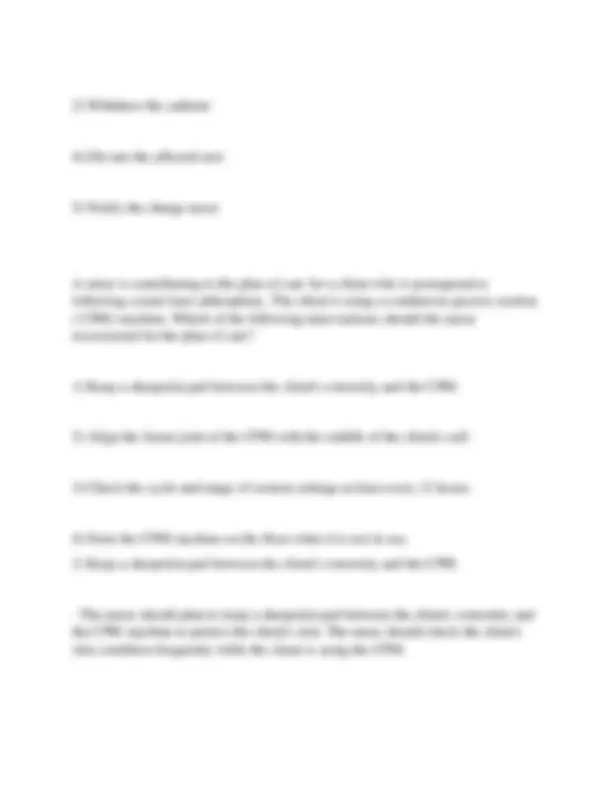
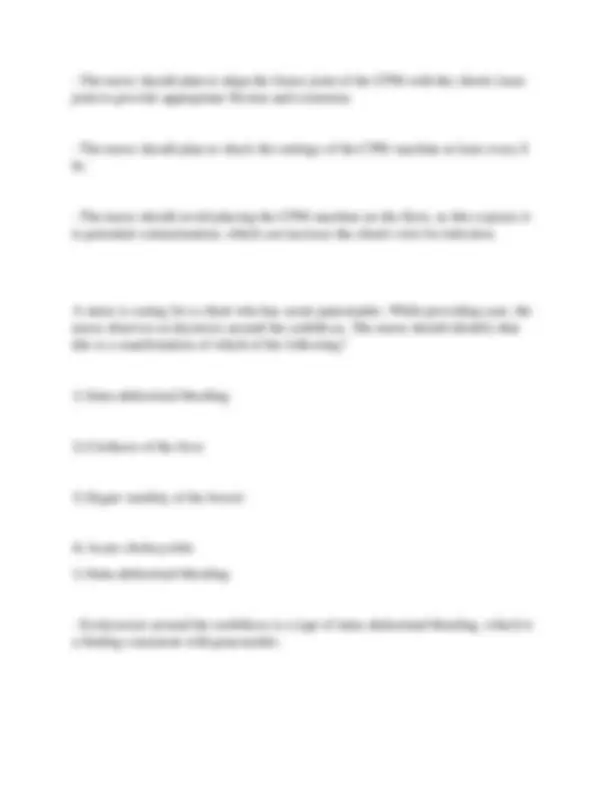
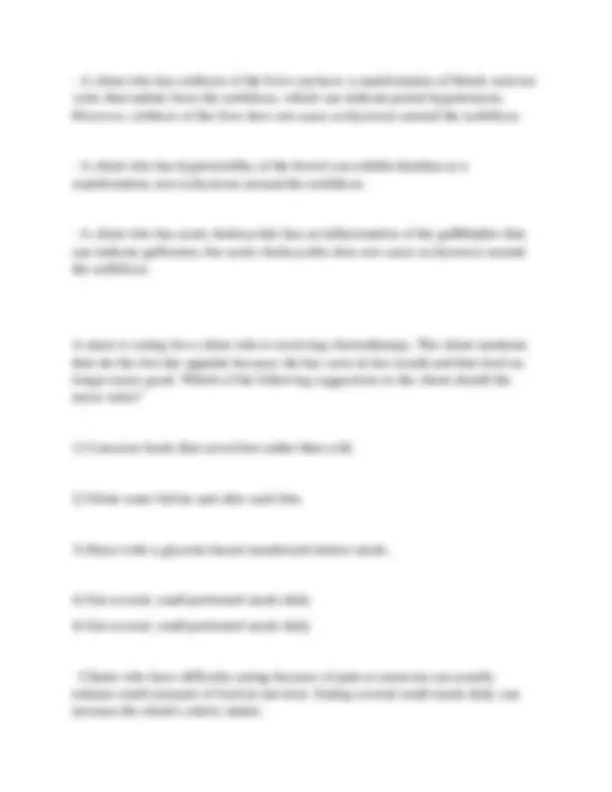
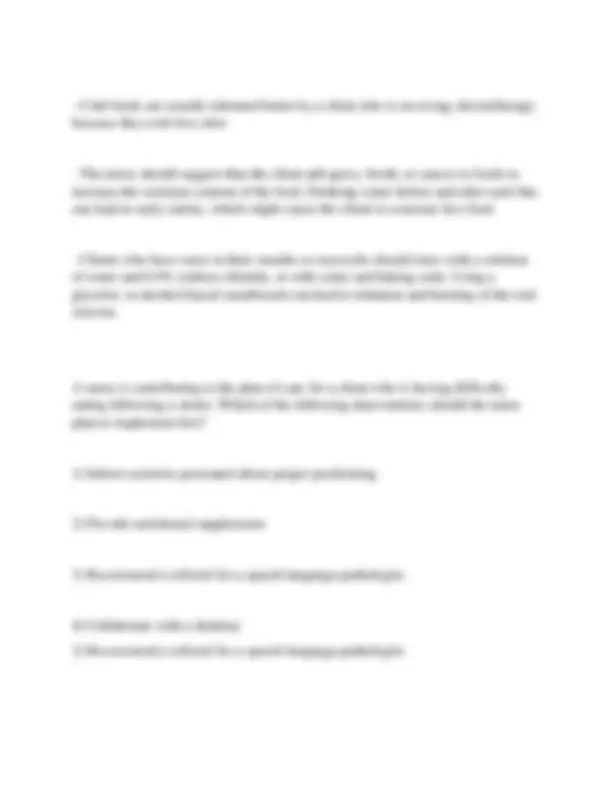
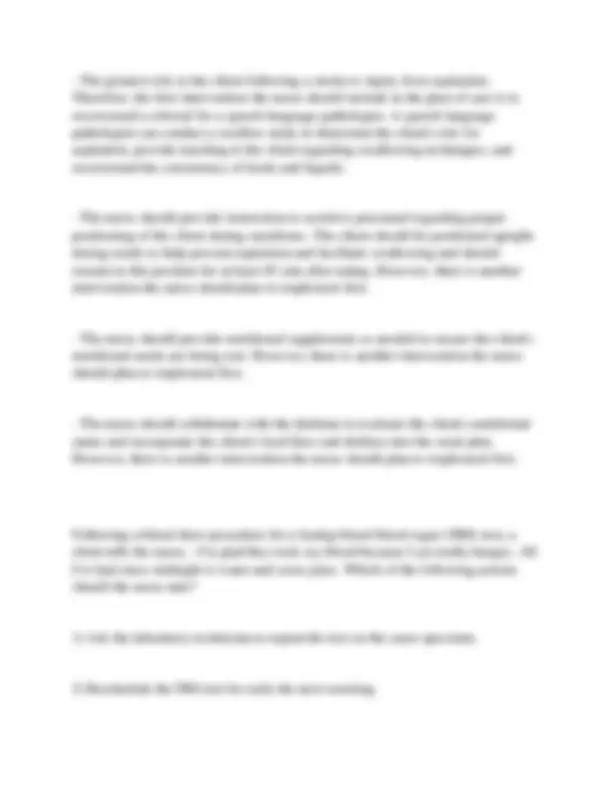
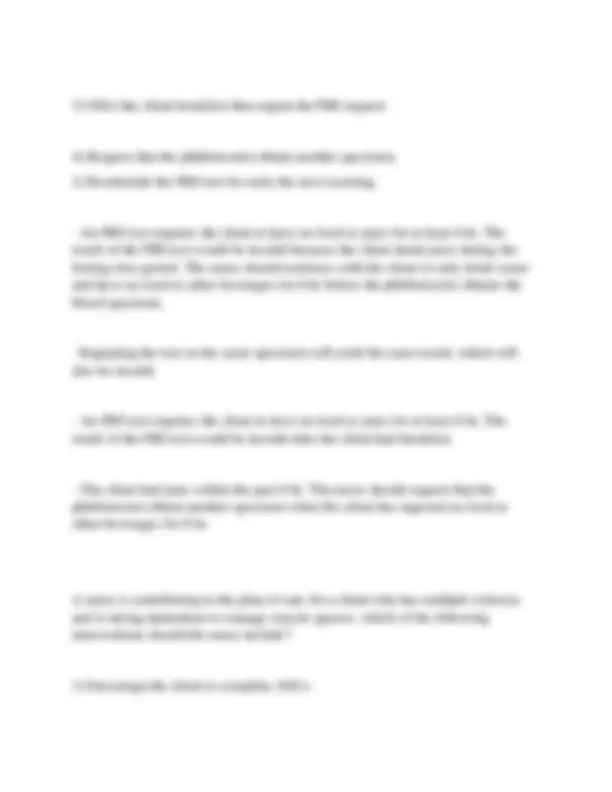
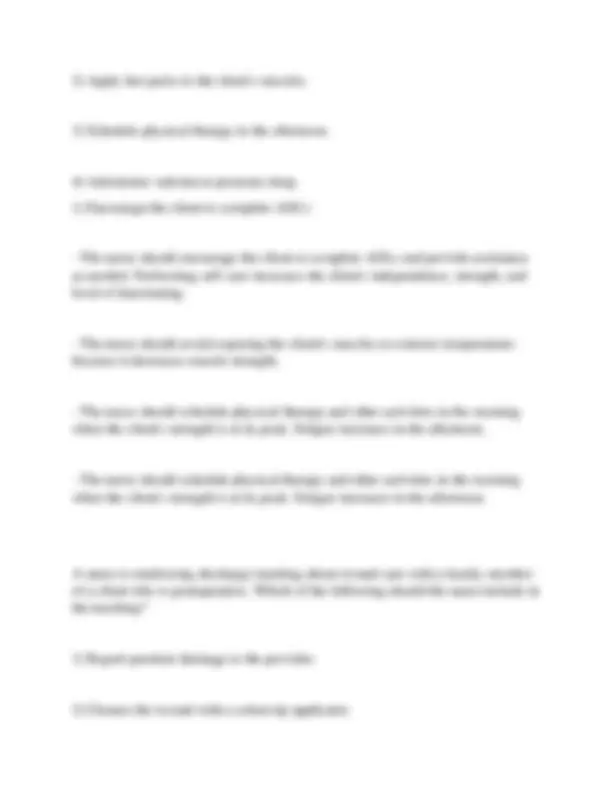
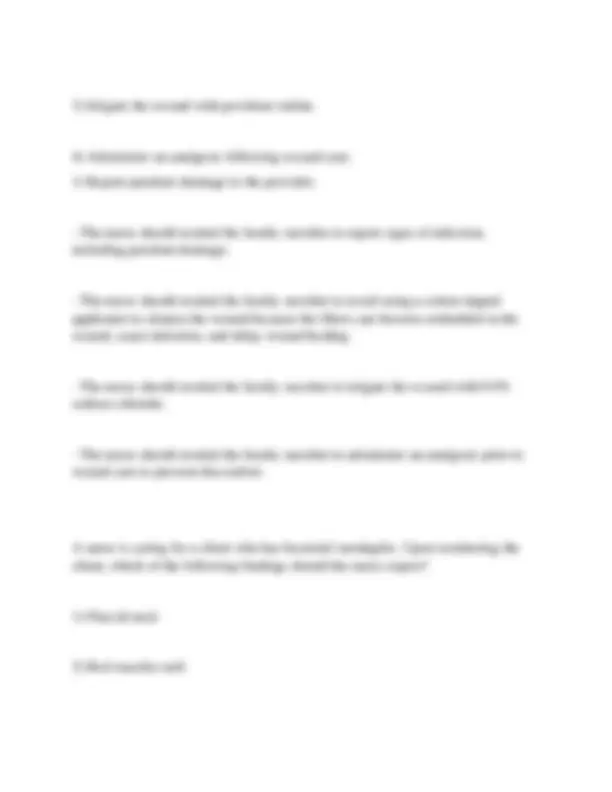
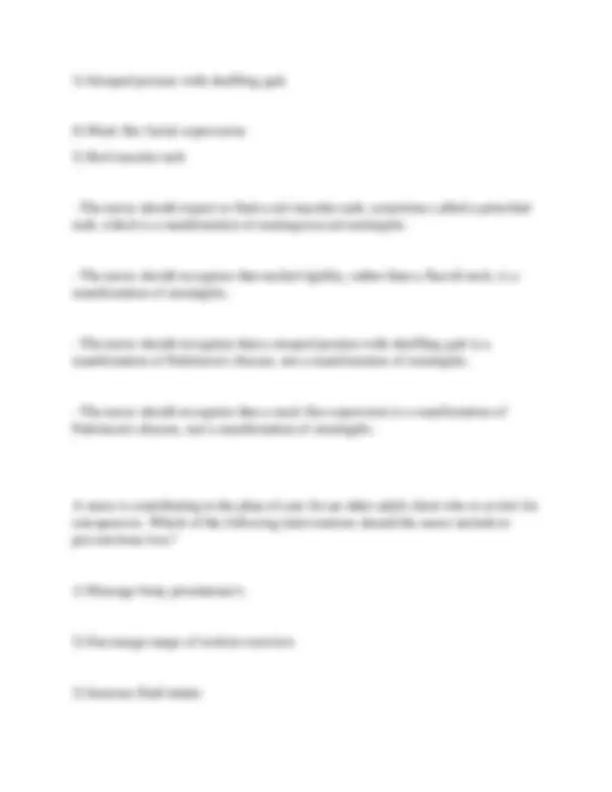
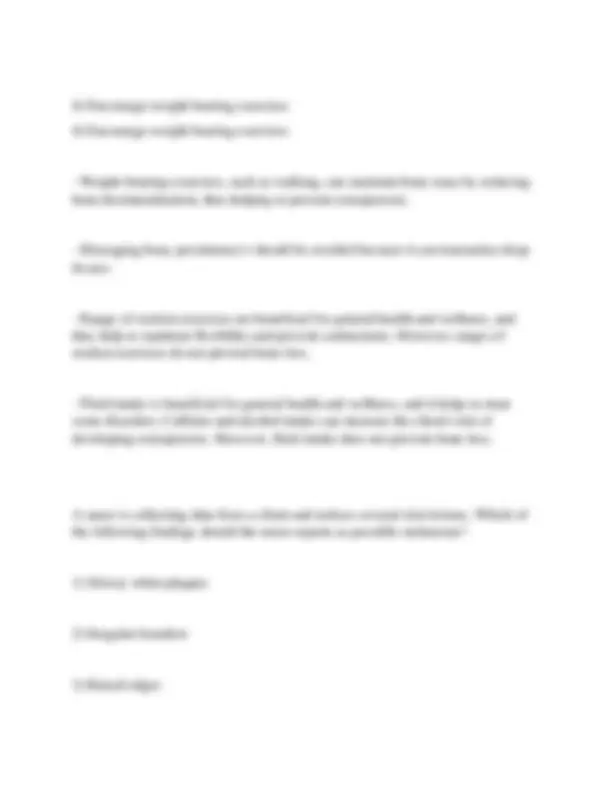
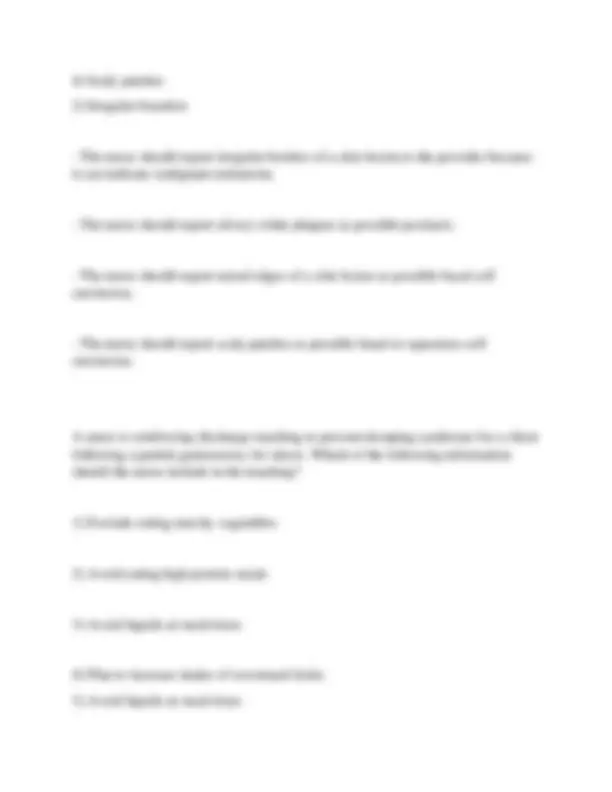
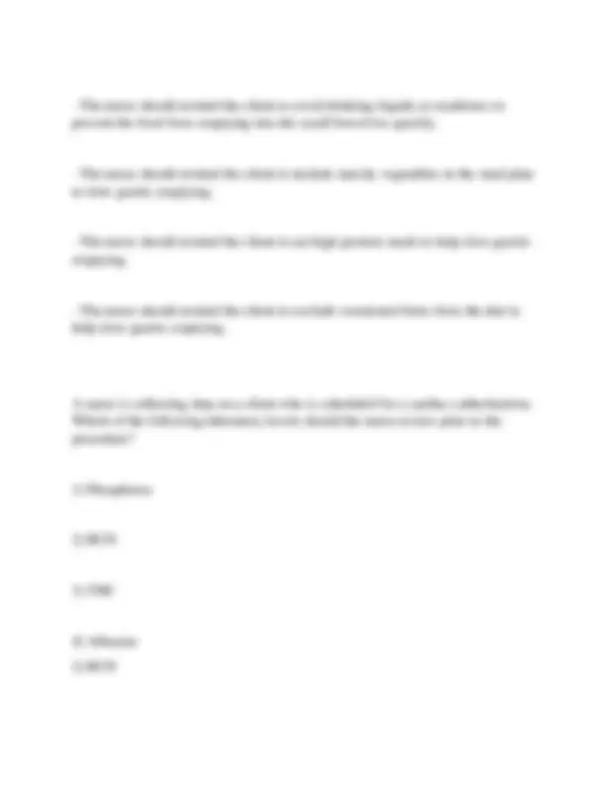
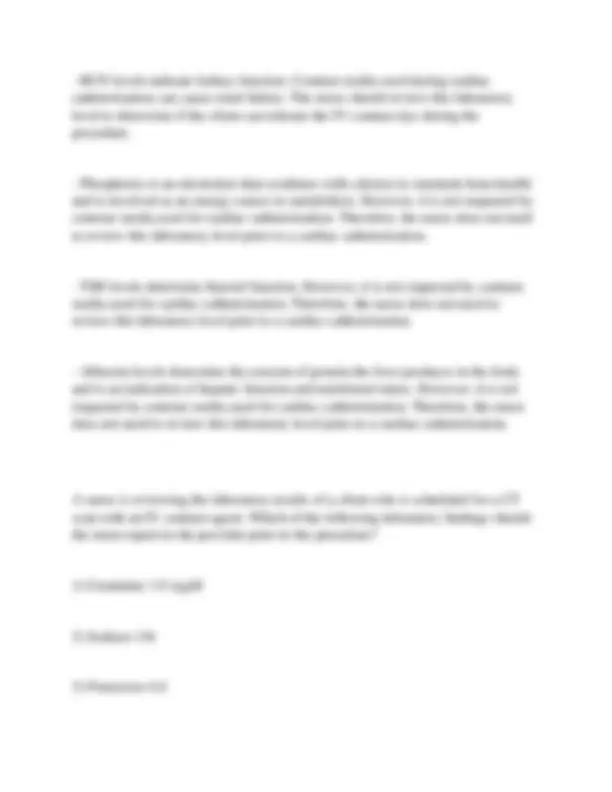
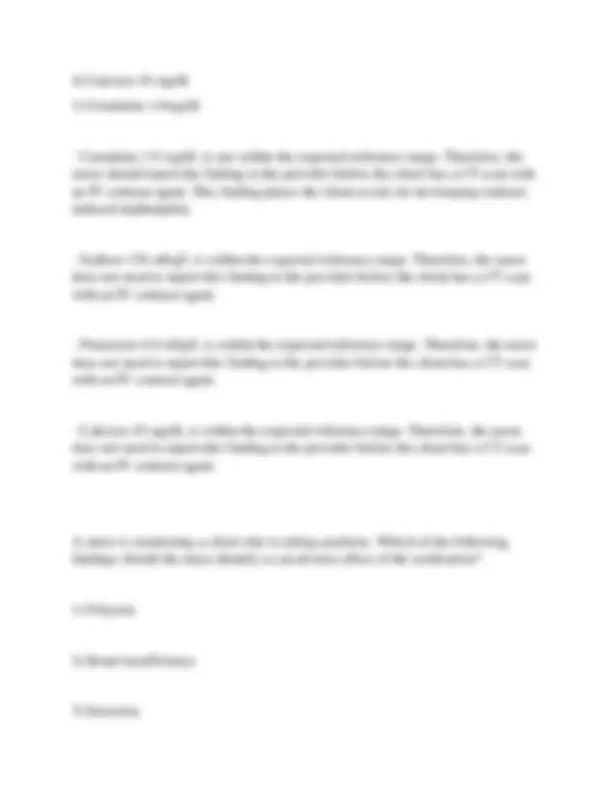
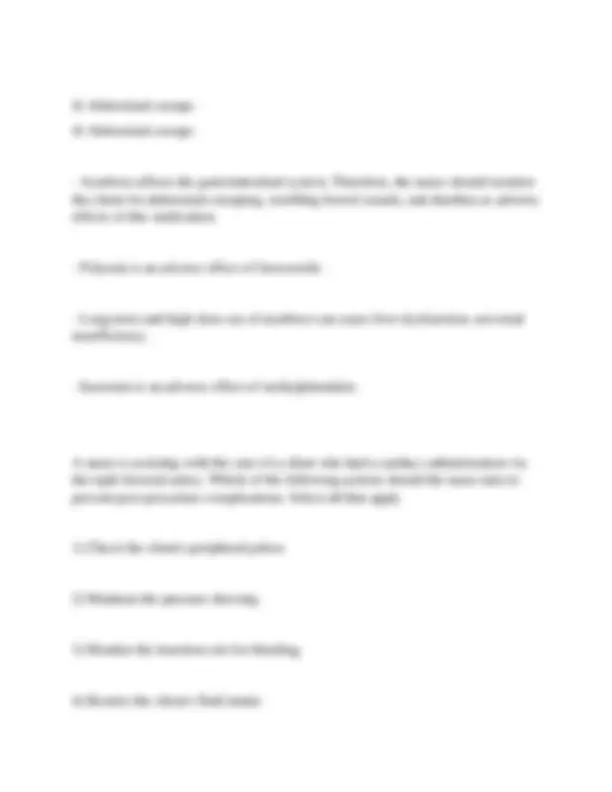
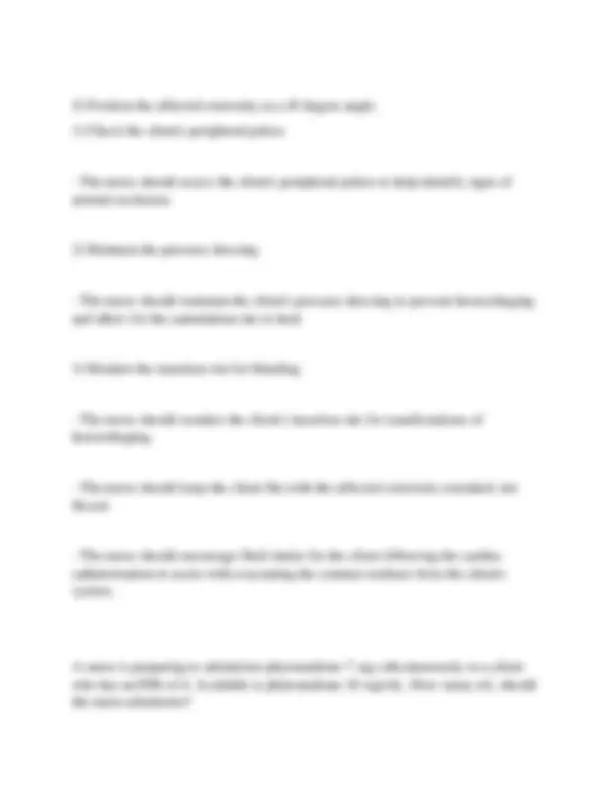
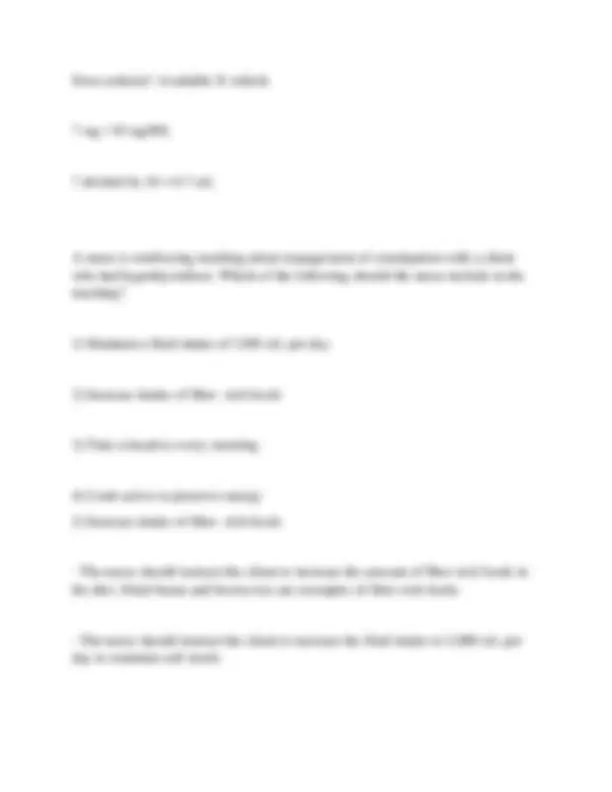
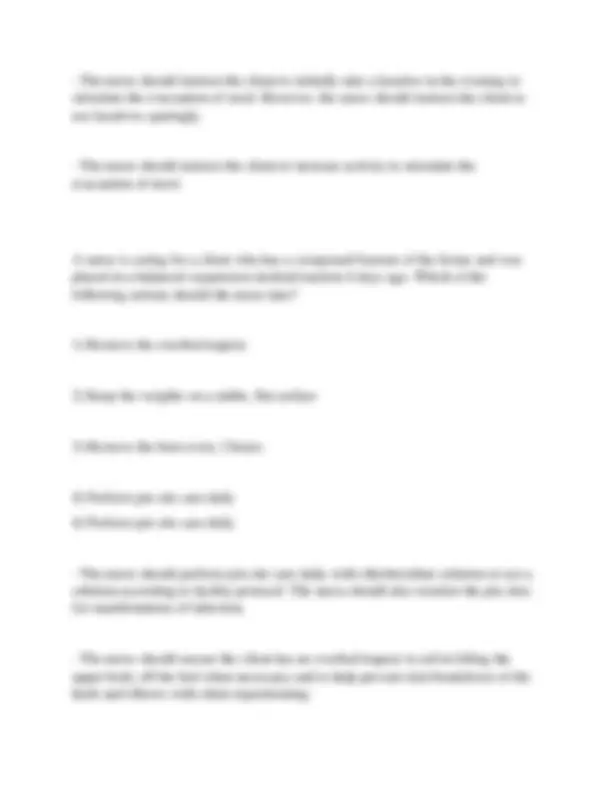
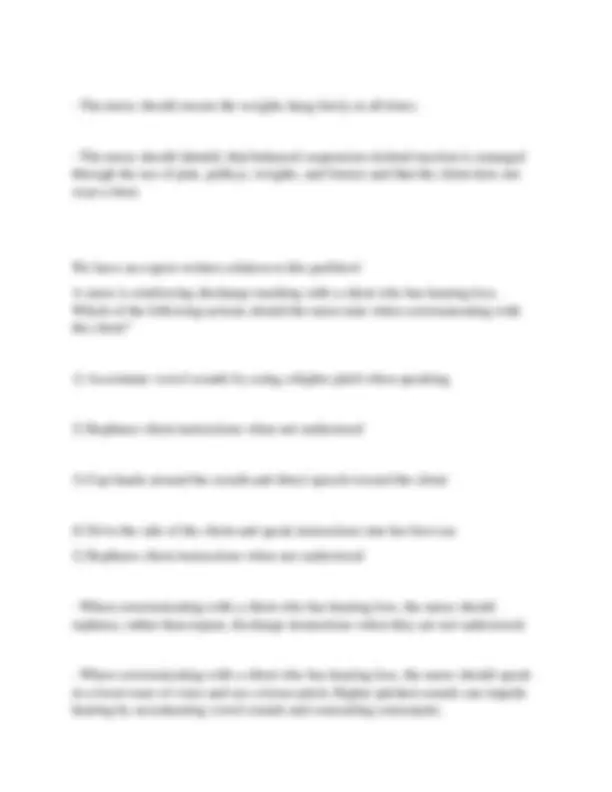
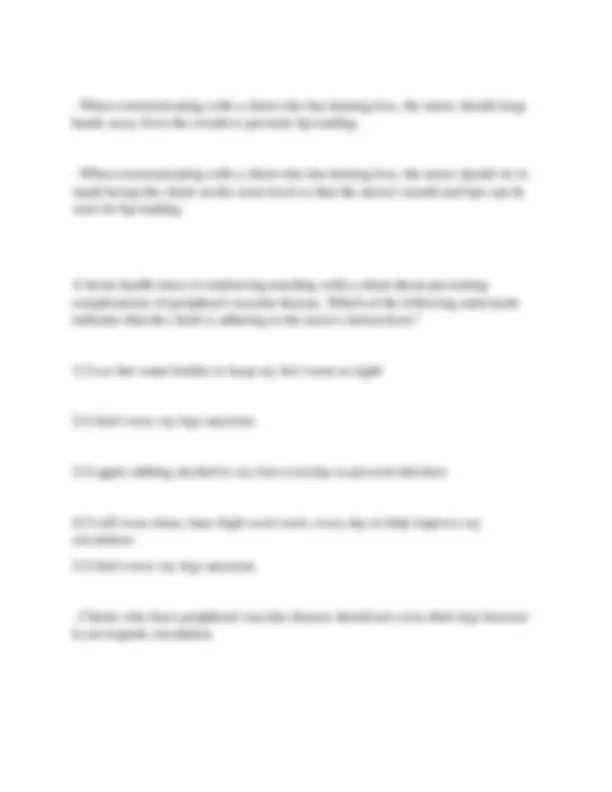
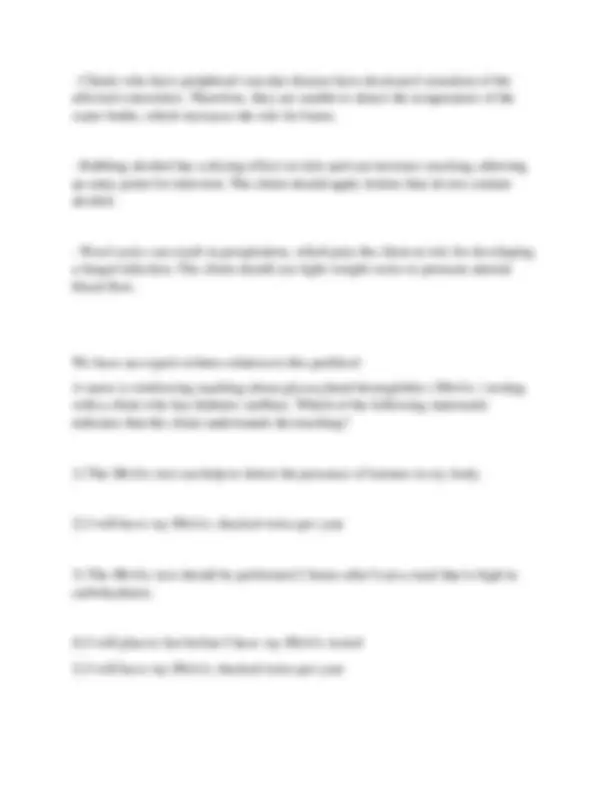
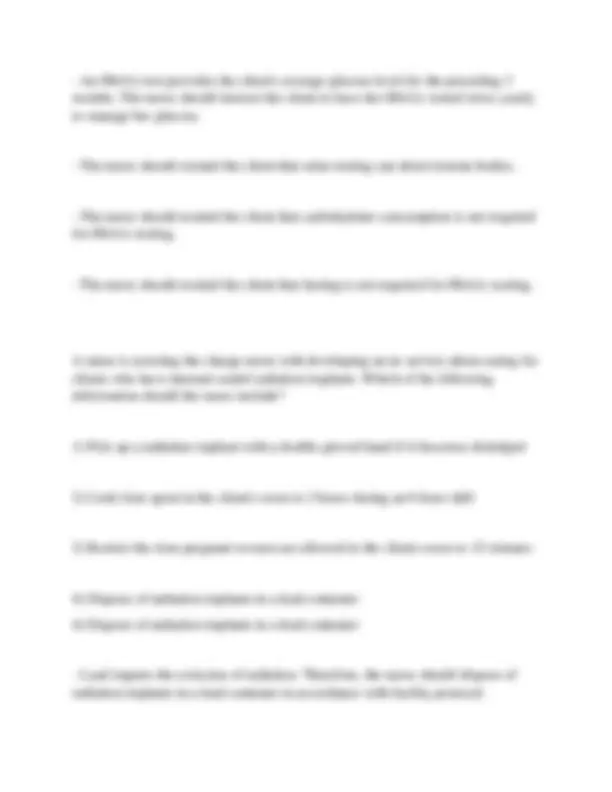
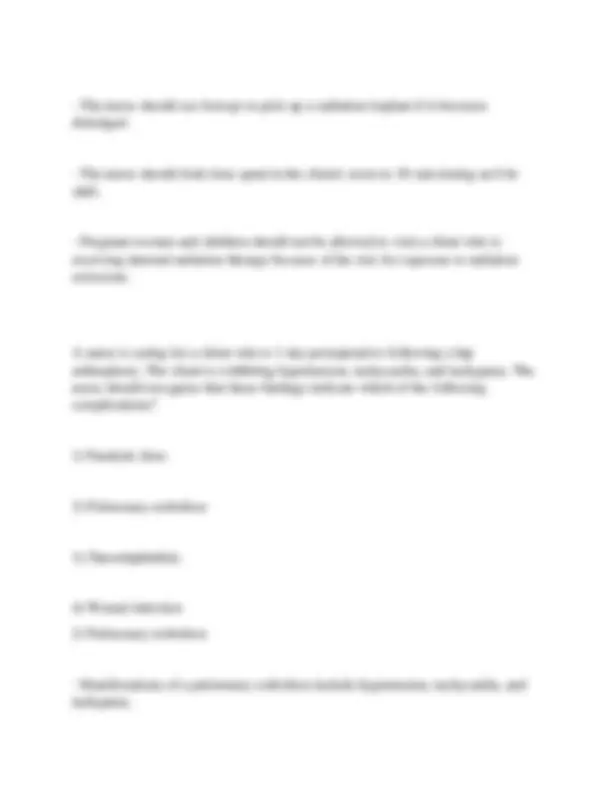
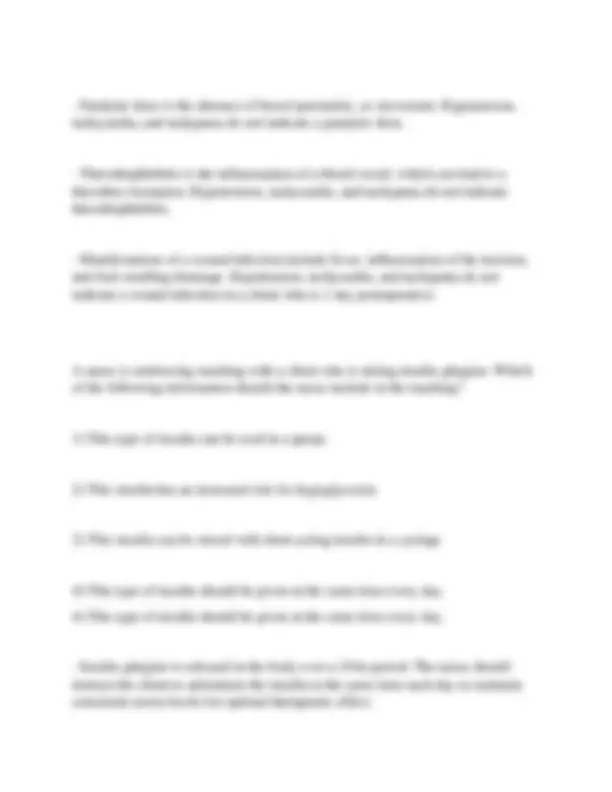
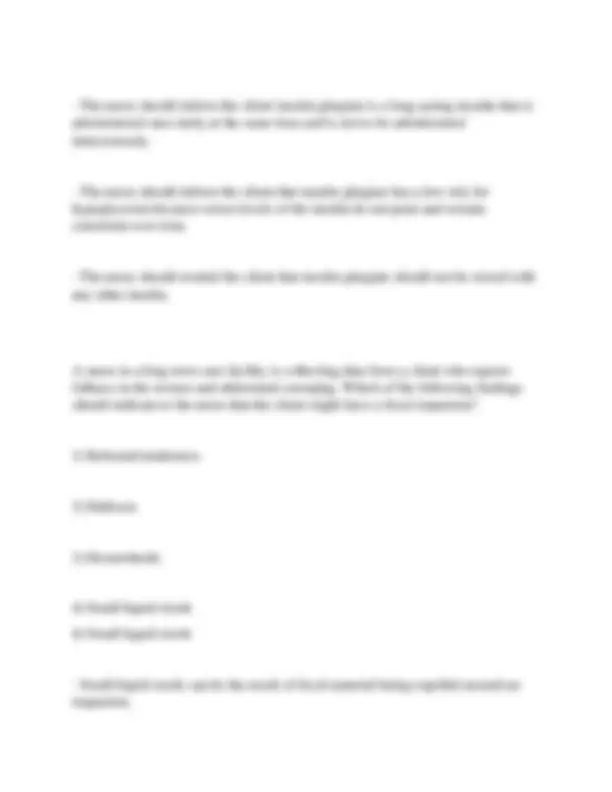
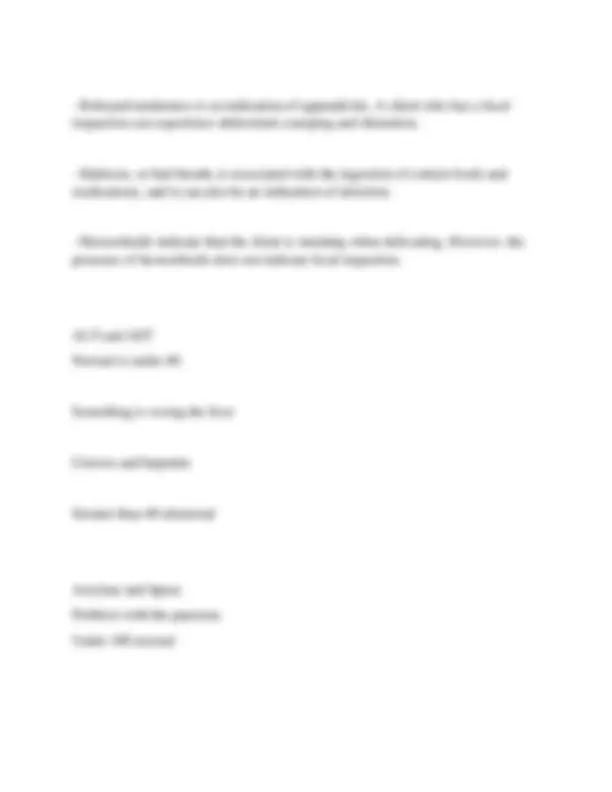
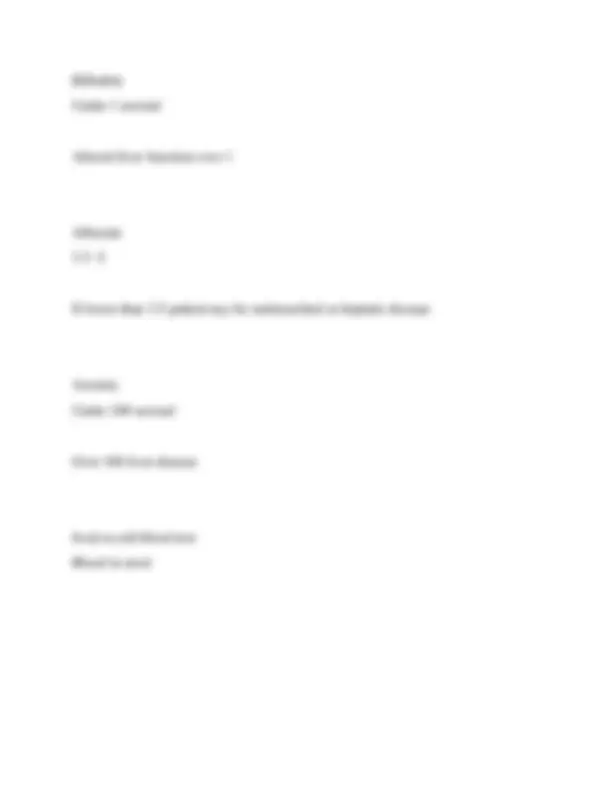


Study with the several resources on Docsity

Earn points by helping other students or get them with a premium plan


Prepare for your exams
Study with the several resources on Docsity

Earn points to download
Earn points by helping other students or get them with a premium plan
Community
Ask the community for help and clear up your study doubts
Discover the best universities in your country according to Docsity users
Free resources
Download our free guides on studying techniques, anxiety management strategies, and thesis advice from Docsity tutors
Medical surgical ATI proctored exam 2025-2026. Questions with verified answers. GUARANTEED A+ GRADE. What would you do for wound Evisceration (removal of internal organs) , Emergency management? Saline cover wound What would you do for an ASTHMA emergency management of a bee sting allergies? Epi Pen Seizures and Epilepsy: Seizure precautions During a seizure: 1) Position client on the floor 2) Provide a patent airway 3) Turn client to side 4) Loosen restrictive clothing Cancer treatment options: Protective Isolation
Typology: Exams
1 / 84

This page cannot be seen from the preview
Don't miss anything!













































































What would you do for wound Evisceration (removal of internal organs) , Emergency management? Saline cover wound What would you do for an ASTHMA emergency management of a bee sting allergies? Epi Pen Seizures and Epilepsy: Seizure precautions During a seizure:
Position client on the floor
Provide a patent airway
Turn client to side
Loosen restrictive clothing
Cancer treatment options: Protective Isolation If WBC drops below 1,000, place the client in a private room and initiate neutropenic precautions.
Infection control: Appropriate room assignment Standard Precautions:
Droplet:
Airborne:
Pulmonary Embolism: Risk factors for DVT
Disorders of the male reproductive system: Complications of continuous irrigation following Trans-urethral Resection
Non-modifiable risk factors ( Page 3 ATI )
Modifiable risk factors ( Page 3 ATI )
Emergency nursing - Triage BASED ON ACUITY
Emergent- Life threatening situation going on.
Urgent - Need to be treated soon but not life threatening.
Non urgent- The patient can wait for an extended period of time , without big issues.
Red tag
Yellow Tag
Green tag
Black tag
Priorities: general rule A - Airway - Secure the airway by head tilt , chin lift maneuver unless a fracture in cervical spinal. Brain injury or death in 3 - 5 minutes if airway not patent.
B- Breathing - Auscultation of breath sounds, Chest expansion and respiratory effort, Rate and depth of respiration's, Look for chest trauma, Determine tracheal position, Check for jugular vein distension.
C- Circulation - Heart rate, BP, Peripheral pulses, Cap refill.
D - Disability - Clients level of consciousness with:
E- Exposure - Hypothermia - Patient in cold icy water:
IF patient has had accidental or purposeful poisoning:
Call rapid response team when client is rapidly declining.
Cardiac Emergencies If V fib or ventricular tachycardia you would initiate:
Alpha 1 receptors Activation Causes the skin , mucus membranes and veins to vasoconstrict.
Increased heart rate
Beta 1 receptors Help stimulate the heart
Beta I - You have 1 heart
Stimulate the heart and increase the heart rate
Used for treating:
Epinephrine:Triggers the Beta 1 receptors
Cause increase heart rate
Beta II receptors Help stimulate the heart and lungs
Beta II You have 2 Lungs
Causes:
Epinephrine:Triggers the Beta II receptors
Cause bronchodilation and treat Asthma
Dopamine Causes renal blood vessels to dilate.
Epinephrine: Dopamine receptors and if given a little more Beta I
Helps with:
A nurse is monitoring a client who recently had a cast placed on his lower extremity for a bone fracture. Which of the following findings should the nurse recognize as abnormal?
Combination oral contraceptives
Intrauterine device
Latex condom
Contraceptive sponge
Combination oral contraceptives
A nurse is collecting data from a client who has heart failure and is on digoxin. Which of the following outcomes from the medication should the nurse expect?
Increased heart rate
Decreased urinary output
Decreased shortness of breath
Increased weight
Decreased shortness of breath
A nurse is reinforcing teaching with a client who has Systemic Lupus Erthematosus (SLE) and is to begin taking mythylprednisolone orally. Which of the following statements should the nurse include in the teaching?
Offer sips of water to the client following oral care.
Massage the clients lower extremities with lotion every 2 hours.
Encourage the client to use an incentive spirometer every hour while awake.
Encourage the client to use an incentive spirometer every hour while awake.
What are the signs and symptoms of pulmonary embolism?
A nurse is reinforcing teaching with a client who has Multiple Sclerosis and a new prescription for baclofen. Which of the following instructions should the nurse include in the teaching?
Take this medication on an empty stomach
Avoid stopping this medication suddenly.
Use Chamomile tea to alleviate insomnia.
Consume a low- purine diet
Avoid stopping this medication suddenly.
This laboratory value is within the expected reference range and indicates adequate kidney function. The nurse should identify that the client who is diabetic is at increased risk for the development of renal failure, which can increase the risk for infection and delayed wound healing.
Prealbumin normal range 23 - 43
Sodium normal level 136 - 145
Calcium normal level 9.0 - 10.
Potassium normal level 3.5 - 5.
Magnesium normal level
Chloride normal level 98 -
Phosphorus normal level 30 - 4.
Lithium level 0.6-1.
Digoxin therapeutic level 0.5-2.